Trip Report: Sudan
Visited in February 2021
It was 8am on a sunny Saturday when my driver picked me up at my hotel in Khartoum. I landed in Sudan the evening before, got my visa on arrival (thanks to an entry permit my tour operator sent me), and reached my hotel at about 1 in the morning. Although my night in the Khartoum Plaza Hotel that my tour operator booked for me was awful, as I have rarely seen such a filthy hotel, I was more than excited now since my desert tour in Sudan was going to start.
I was going to spend the next three days in the desert with one night in Karima and one in Meroë. Before we drove out of Khartoum, we quickly stopped by the office of my tour operator, where I left my passport. I was told I would get it back when we return to Khartoum. Tourists in Sudan have to be registered somehow. Don’t ask… my tour operator did it for me. But apparently it is mandatory for all tourists, even those traveling without a tour.
It did not take long until we were out of the capital and on our way towards Karima. The roads in Sudan are relatively good despite some gigantic potholes every now and then. And so we drove in a Toyota Landcruiser a good five hours through monotonous Saharan desert landscapes. We often had to stop at one of the many police checkpoints, where my driver handed out a copy of my passport. It reminded me of Mauritania with all the “fiche” you need there.
The drive on that day was long. Not only because we just drove straight through the no man’s land of the Sahara. No, the other reason was my driver, because he didn’t like to talk. Basically, he only said something when I asked him a question.
After about fifteen questions, all of which he answered with the least amount of words as possible, I ran out of steam. It’s going to be a long three days, I thought. In retrospect, we chatted the most in the first few minutes of the trip. The total amount of conversation we had in those three days I would estimate at a maximum of 15 minutes. If I hadn’t seen the desert from the car, I might have thought I was in Finland.
As we continued our trip through the desert, I saw donkeys, sheep, goats and camels every now and then. This part of the desert means pure survival for the animals. I notice a few bushes and some small trees that the animals can feed on. However, for some of these animals that seemed to be too little, because I saw dozens of carcasses on the roadside that day. It did not look to me as if the animals were run over. The hostile Sahara had probably simply defeated them.
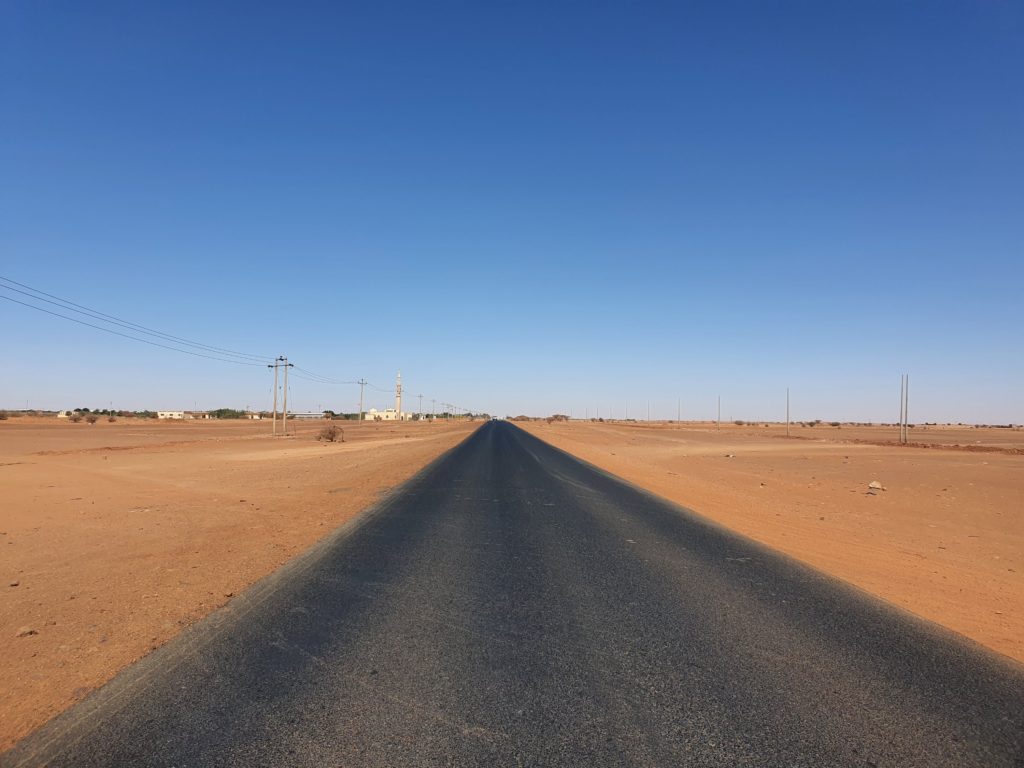
In order not to end up like the animals, we decided to take a lunch break. On this route, you pass a few small villages from time to time, where you can find a restaurant sometimes. I often got beans in an oily sauce with egg and pita bread. My driver said that it’s the national dish of Sudan. You definitely get your fill of it, but I would not call a culinary treat.
All in all, it took us about five or six hours in total to get from Khartoum to Karima. According to my tour program, there are four attractions in Karima and my driver said we would see the first two on the first evening. The first was a pharaoh’s tomb, which I didn’t find very interesting, but the second attraction was world-class: the Jebel Barkal mountain and the pyramids next to it. We went to the pyramids first. Not Egypt but Sudan is the country with the most pyramids in the world and the ones next to Jebel Barkal are spectacular. The best part was that besides me, there was no other tourist far and wide at this sight.
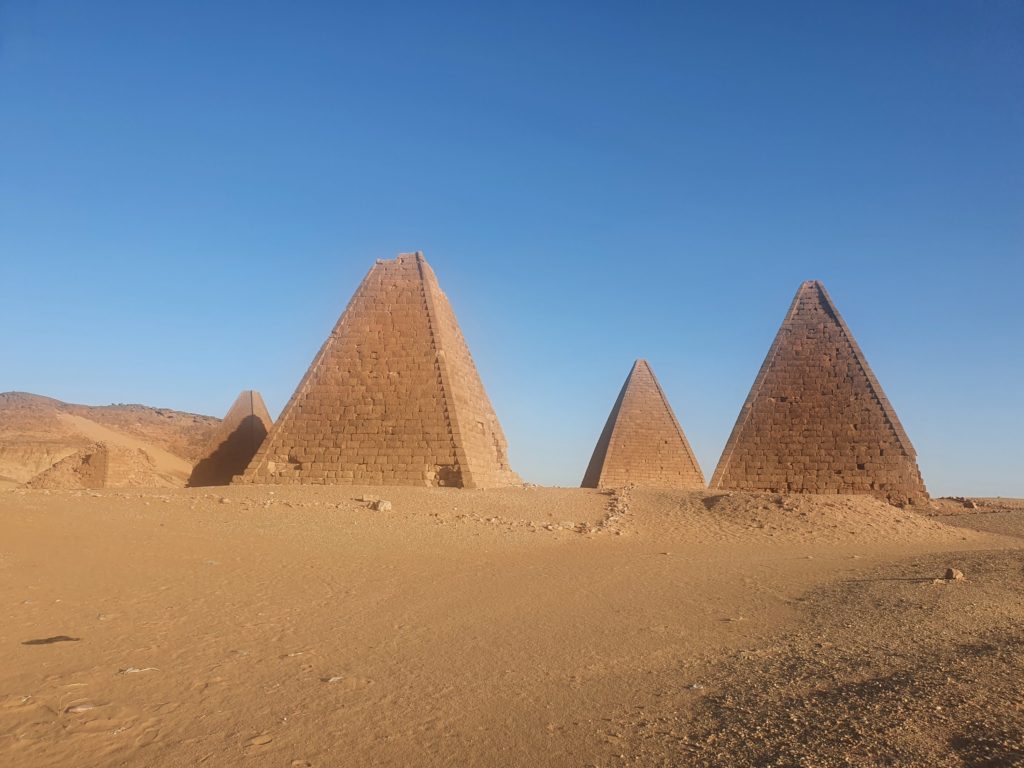
At Jebel Barkal, I actually saw other tourists. A whole five cars were already parked at the foot of the mountain and the tourists prepared themselves for the hike. Therefore, I started climbing as quickly as possible to be able to take a few pictures without other people. Out of breath, I reached the top after ten minutes. The hurry would not have been necessary, because at the top you have so much space that you don’t get in each other’s way anyway.
The view from this small mountain was just phenomenal, because you can see the Nile, the pyramids, tombs, Karima and of course the vastness of the desert. Jebel Barkal was definitely one of my top2 highlights in Sudan.
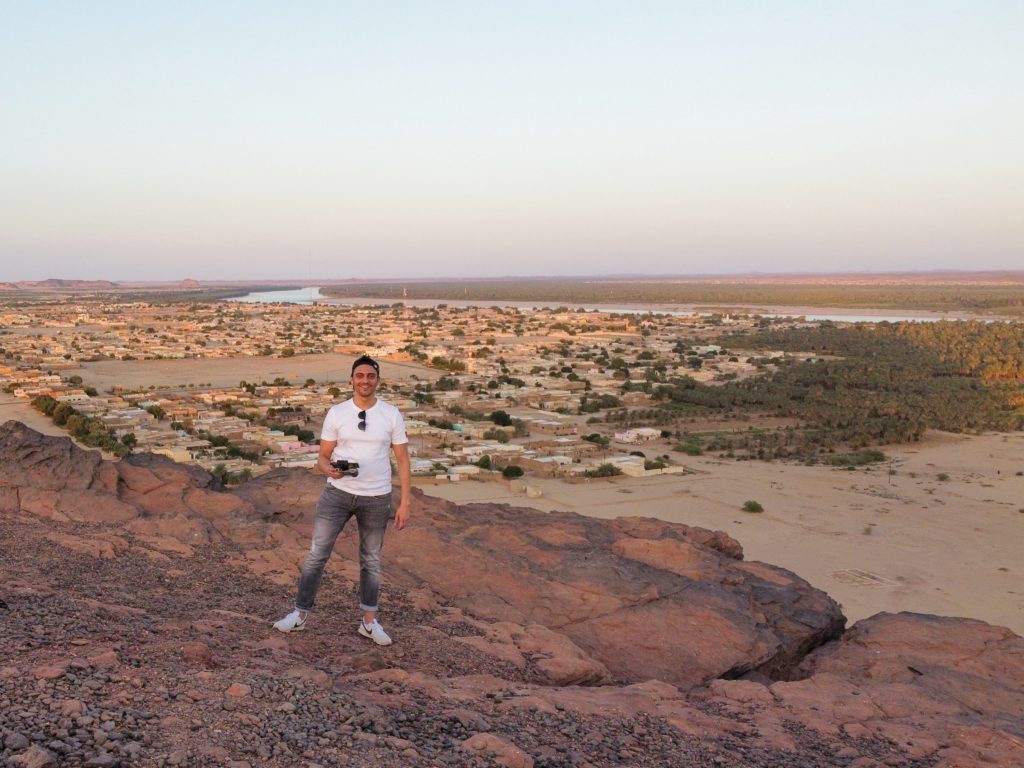
The “Nubian house”, which was the accommodation for this night, was actually even more awful than the Khartoum Plaza Hotel. The bed was terribly uncomfortable, it was cold, there were a lot of ants in the room and the worst was the toilet. I had a choice between a squat toilet and a Western-style one with no toilet seat, but with a brown soup in it instead. I therefore opted for option 3: no toilet until I reach the next accommodation.
The Pyramids of Meroë
I was freezing when I left my room in the next morning. Nights in Sudan can be quite chilly. However, that was secondary because I was looking forward to leaving this accommodation as soon as possible.
Although I actually did that only a few minutes later, we did not get out of Karima so quickly, because the car had a problem. Oil was leaking out. The driver therefore looked for someone who could repair it. For me it is almost a tradition that the vehicle I am in breaks down in Africa. TiA – this is Africa. Needless to say, it took more than two hours until the problem was fixed and we could continue our journey.
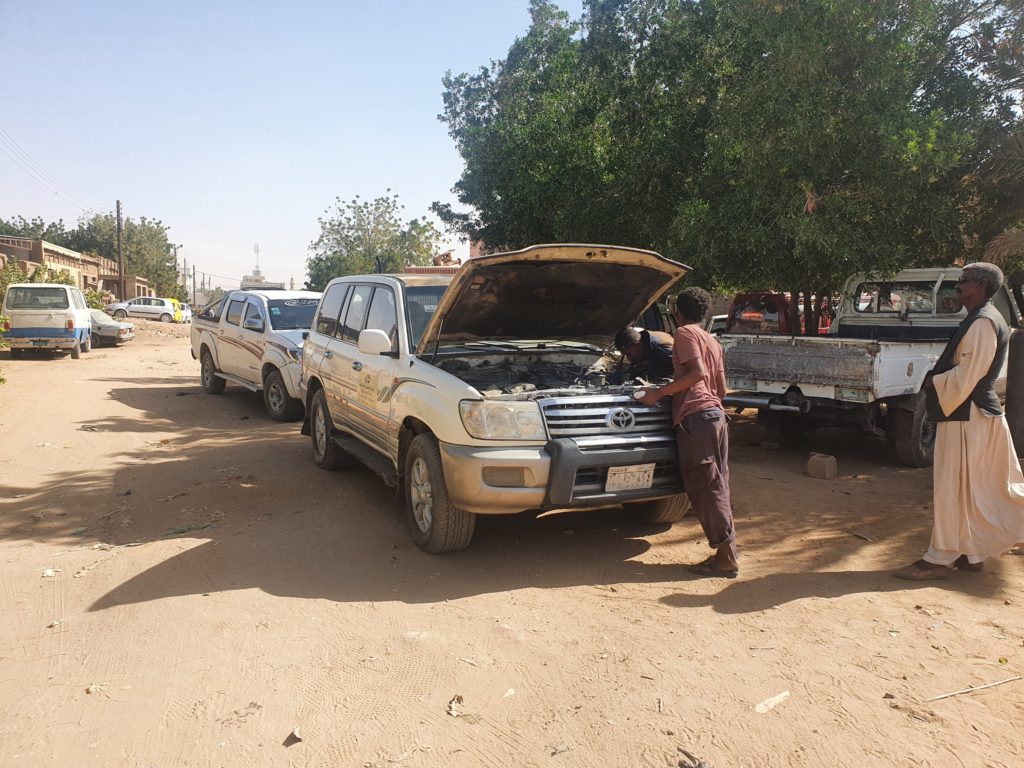
Actually, two more sights in Karima should have followed, but at some point I had the feeling that we were already too far away from Karima. I feared that the problems with the car were at the expense of my sightseeing. “Where do we stop next?” I asked the driver. “Meroë.”
I quickly checked my tour program. We had indeed skipped the last sights in Karima. I confronted my driver and asked why we did not visit all the sights. “These sights are in Karima. Why didn’t you say you wanted to see them?” – “Well, I thought I didn’t have to say anything, as it was on my itinerary.” He probably reckoned that I wouldn’t notice if he secretly shortened the program. He then tried to talk down the sights he had missed. They were not so special, besides, they were destroyed anyway. He clearly did not want to lose face.
However, I must admit that this stressed me. The first day already consisted of a lot of driving and very little sightseeing. Of the already few sights on this tour, two were now stolen from me. Such a car breakdown can happen, of course, but it’s still annoying. I tried to make the best of it and forget it as soon as possible.
And so we drive further hours through the desert. Every now and then we passed a small village whose houses were mostly the same color as the ground. There was often a minaret somewhere between the houses. Besides, I noticed an incredible amount of plastic and other garbage in the desert sections close to the villages. “Desert.” I looked over in surprise. “What?” – “Desert. Nothing but desert here.” said my driver. Wow. It was the first time he said anything at all without me asking a question.
Shortly later the absolute highlight of Sudan should follow: the pyramids of Meroë. We reached the pyramids at about 16.15. The driver said he would come back at 17.30 and pick me up. Thus, after many hours in the car I had a bit more than one hour for sightseeing on that day.
Compared to the pyramids of Giza, Meroë has only a small number of vendors trying to sell you souvenirs or camel rides. However, they are similarly pushy as their colleagues in Egypt and run after you even after the seventeenth no. Fortunately, they give up at some point and so I was the only person at the pyramids from that point on.
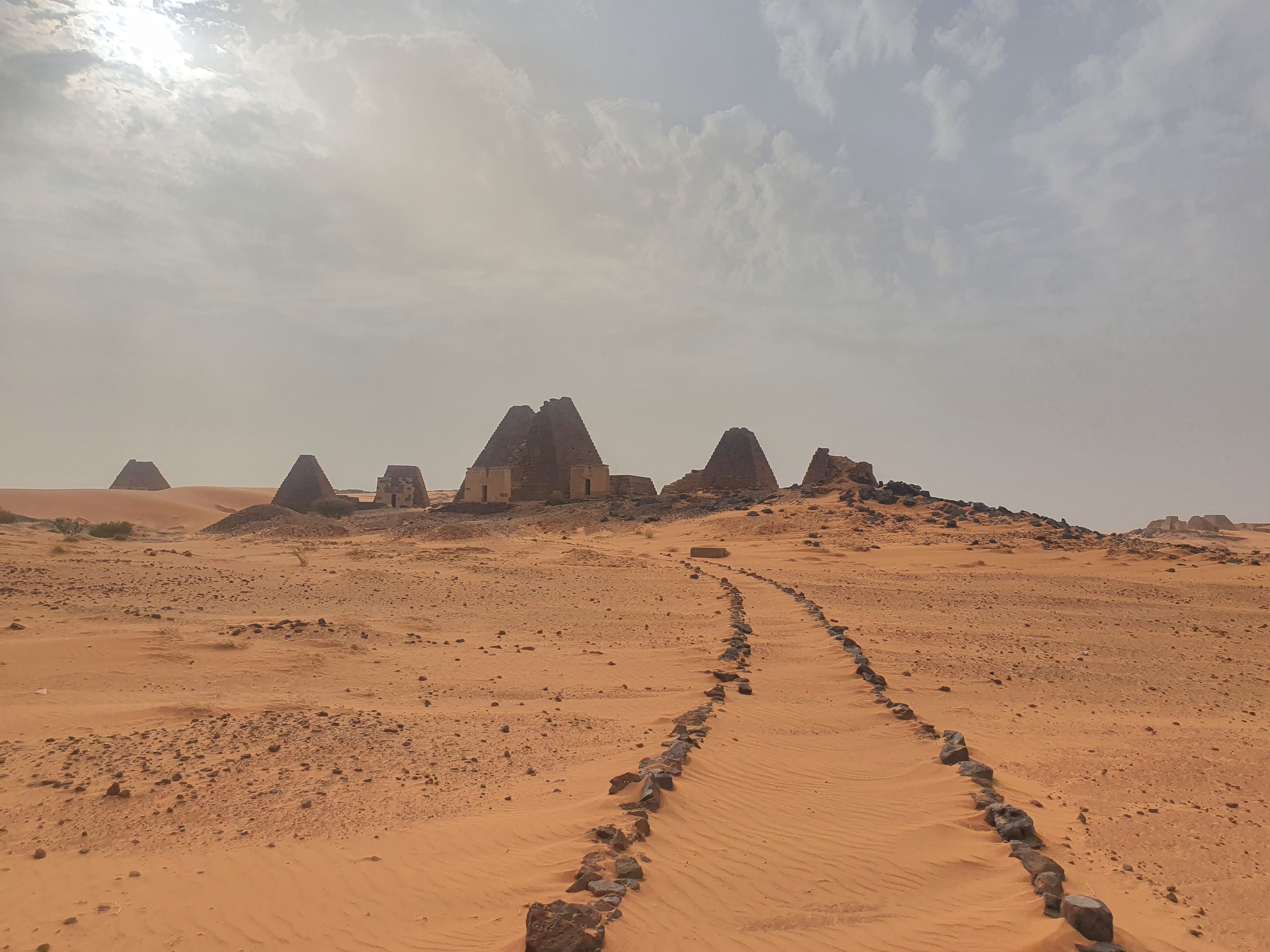
The pyramids of Meroë are a large complex with many pyramids. Although my first impression of the pyramids were just WOW, the next hour turned out to be frustrating. The problem was the strong wind, which almost resulted in a small sandstorm. As I walked through the complex, the wind blew sand into my eyes, nose, ears and mouth. Besides, the sky was foggy from the sand, which unfortunately affected the photo quality.
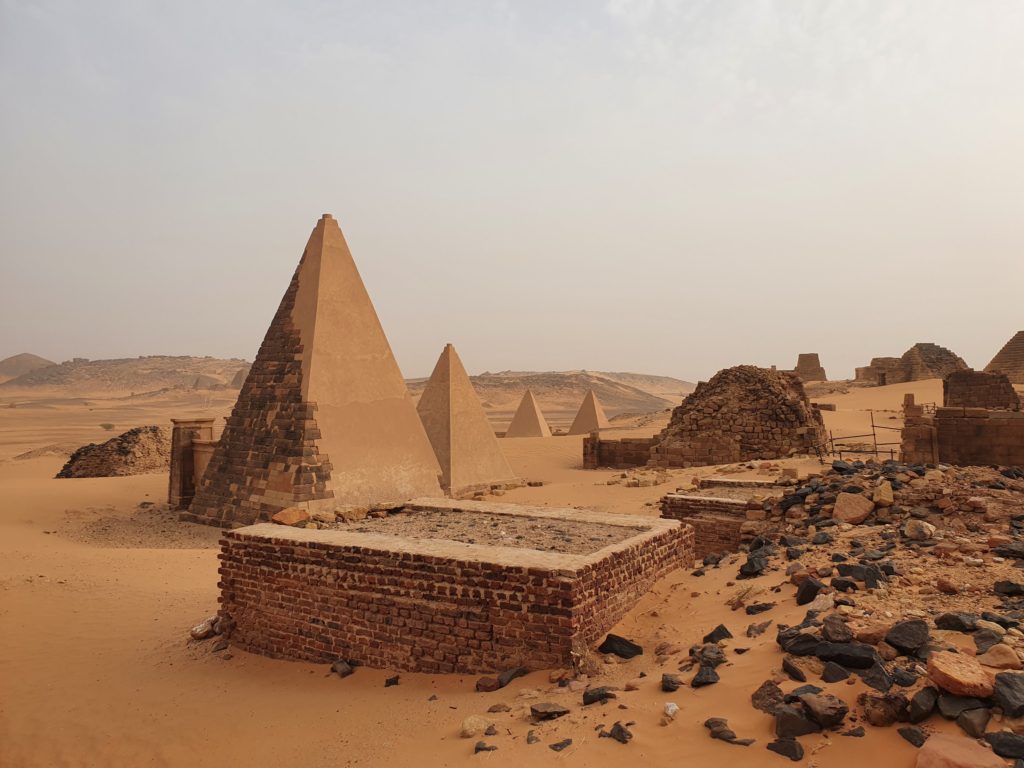
This was the point in time when I had already labeled the Sudan trip as a disappointment for me. I had very high expectations in Sudan, but the trip was not really enjoyable so far. It consisted of very long days in the car with a guy who did not want to talk, sightseeing was limited to 1-2 hours per day, then we miss a few more sights and at the most important sight the weather doesn’t play along. I somehow expected this trip to be better to be honest.
When I was back in the car, I told the driver that I would like to go again the next day if the weather is better. The driver’s answer was… none. Usually he only spoke when I said something. This time he didn’t. He was probably afraid of having to extend the next day by another 30 minutes.
The Pyramids of Meroë II
To my delight, the sky was blue and the sand fog had disappeared when I left my room the next morning. I pointed out to the driver and repeated that I would like to go to the pyramids again. I interpreted his gesture as “is that really necessary?” However, I remained persistent. The car breakdown already meant that I couldn’t see everything on my itinerary. Now I insisted that we go back again. I promised him that I wouldn’t need more than 20-30 minutes, so he finally drove me there again.
This time the pyramids were just awesome. There was hardly any wind blowing and I did not see other people there this time either, so I was able to take some incredible pictures and videos of this sight.
This second visit compensated me for the partly unsatisfactory first two days, because the pyramids are just incredible. Although they may not be as sensational as the pyramids of Giza in direct comparison, the lack of tourists (even pre-Covid) and the smaller number of pushy vendors still make the Pyramids of Meroë a better experience in my opinion. For me, the Pyramids of Meroë were definitely the best I experienced in Sudan and even one of the best attractions on the entire African continent.
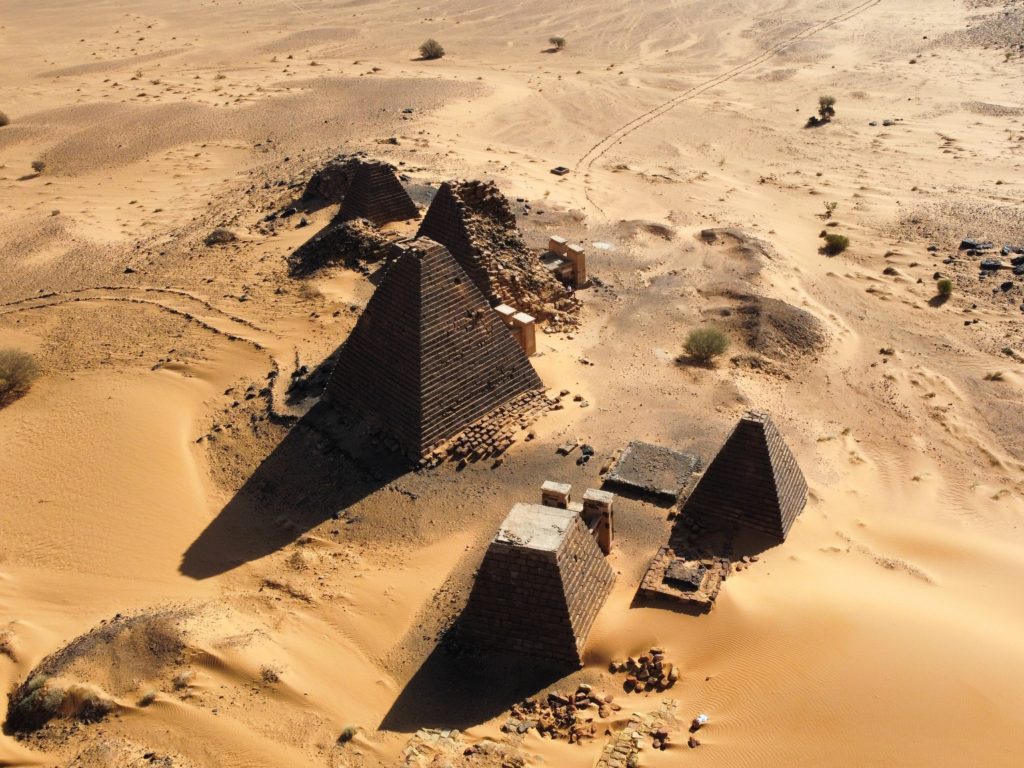
After that second visit at the pyramids, we headed back to Khartoum, which once again meant about a five-hour drive through the desert. The long distances are the downside of a Sudan trip. But what do you expect? Sudan is a gigantic country, the 16th largest in the world and the third largest in Africa. The country was even bigger ten years ago. In 2011, the south of the country separated from the north, creating the new country South Sudan, currently the youngest state in the world. Before this separation, Sudan was the largest country in Africa and the 11th largest in the world.
Sometimes when we passed a gas station, I saw long lines of cars waiting for the next petrol delivery. In certain queues there were at least 200 cars waiting. Apparently, drivers also sometimes spend the night in front of the gas stations. Sudan used to be an oil-rich country. Unfortunately, ¾ of the oil reserves are in the area that now belongs to South Sudan, so the price per liter of petrol is today 500 SDP. Thus, petrol in Sudan is nowadays not much cheaper than in Europe.
We continued to drive for hours through the Sahara and kept silent as in the days before. The only upset during this drive occured when the driver ran over a sheep. The poor animal strayed from the herd onto the road and even the driver’s abrupt attempt to stop could not prevent us from running over the sheep at about 30kmph. What followed was a rant in Arabic from the otherwise calm driver towards the young shepherd, who just looked at the driver with wide eyes. And the sheep? To my great surprise it survived and jumped away only a few seconds after the impact. Fortunately, it did not look injured either.
We later visited the sights of Naqa and Musawwarat es-Sufra in the middle of the desert. Both of these places offer some good sights and make the long journey between Meroë and Khartoum (or vice versa) a bit more entertaining.
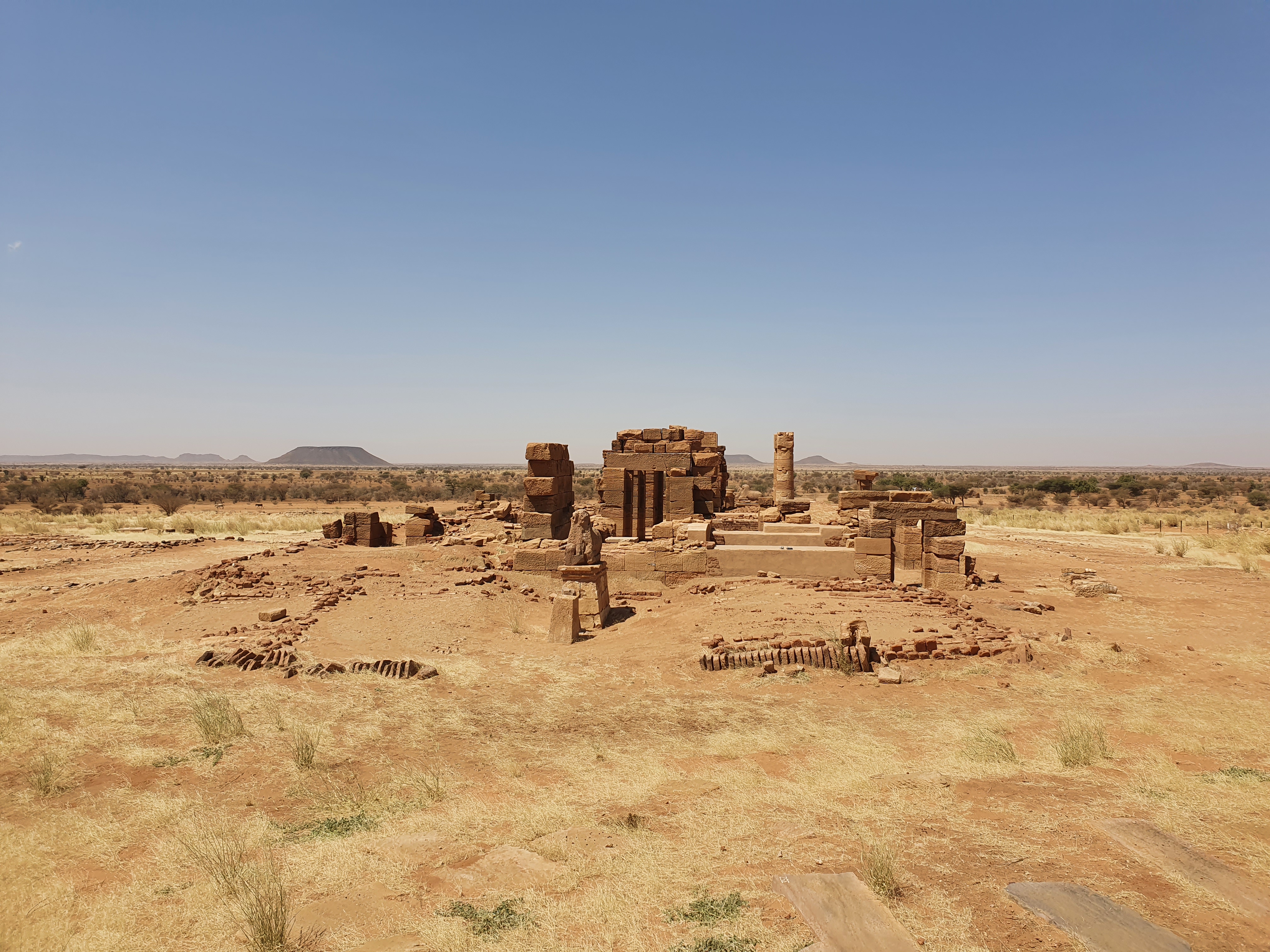
We got back to Khartoum in the late afternoon. After three very quiet days with my driver it was time to say goodbye. As stupid as it may sound now, I somehow liked my driver in spite of everything. Even though he didn’t speak much and I also had the feeling that he wanted to get the job over with as quickly as possible, he took good care of me in the end. We shook hands and wished each other all the best for the future.
The Khartoum city tour
On my last day in Sudan, a Khartoum city tour was on the agenda. Not my driver from the days before but a younger guy was my guide on that day. He was a bit delayed because to my surprise he had to pick up another tourist for this tour. Actually, I got a guarantee from my tour operator before my trip that I would not have to share my tour with other tourists. I requested this mainly because of Covid. Even though the tourist turned out to be a nice guy, I felt that they broke their word. Of course, I did not get a discount for the fact that the tour was now suddenly a shared tour.
Khartoum reminded me at first sight a bit of Cairo, mainly because of the Nile flowing through the city. However, I soon realized that Khartoum would rather be a suburb of the Egyptian capital, which is a lot more developed in comparison. Still, there are other similarities besides the Nile: lots of people, lots of dust, it’s hectic and traffic is terrible. Khartoum may not be everyone’s cup of tea, but I think the city is interesting enough for one or two days.
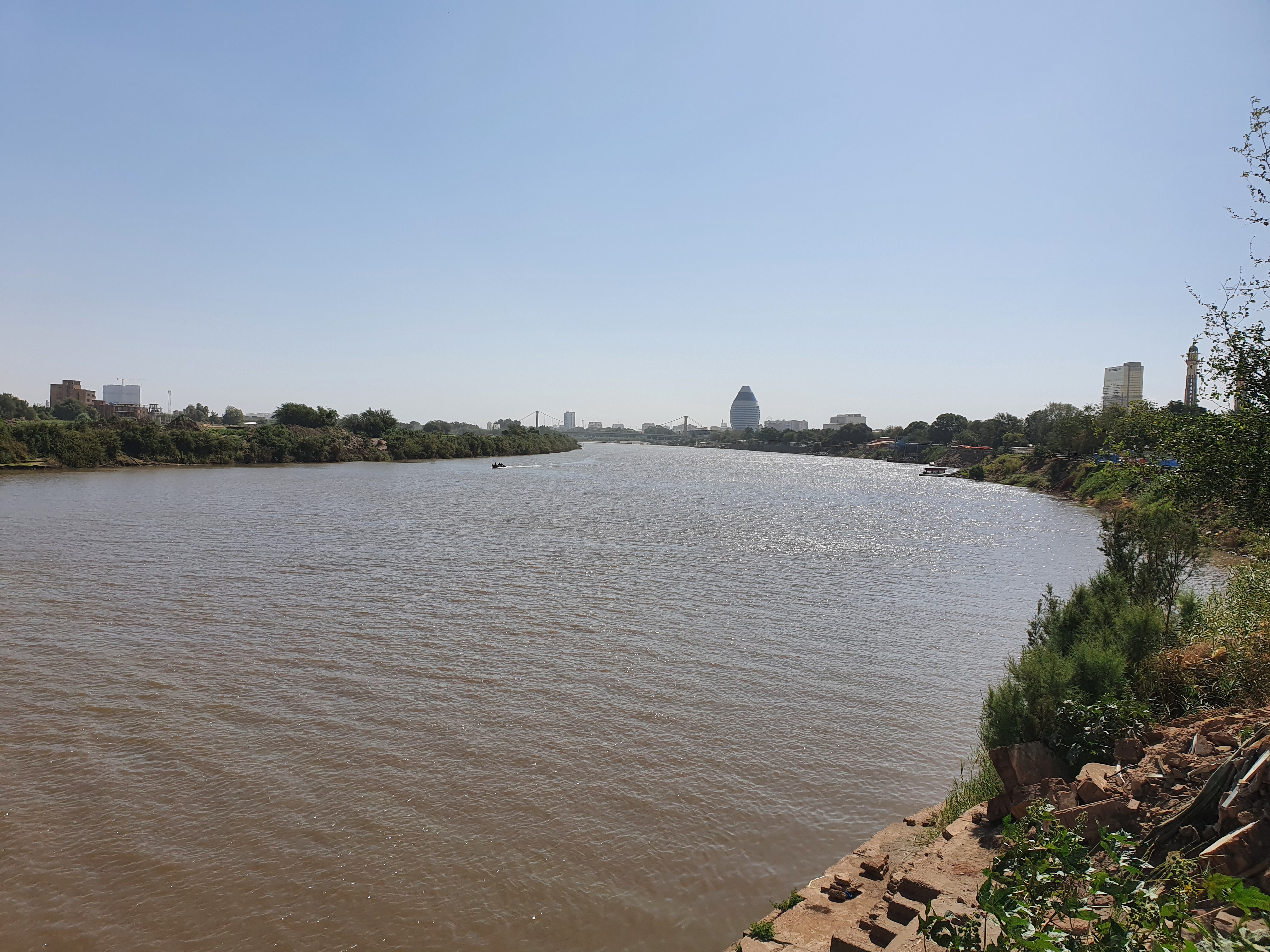
The tour itself, on the other hand, was a joke. Our driver drove us to a few places where we had a few minutes to take pictures. There were never any explanations or any history about the respective places.
When we reached the national museum, our driver tried to explain that the main hall was closed and we could only look at the exhibitions in the courtyard. Since a lot of locals were constantly entering and leaving the main hall, I doubted that the guy was telling the truth. I told the other tourist that I feel that the driver just didn’t want to lose time by entering the building. He agreed.
We left the museum or rather the garden of the museum after about half an hour. While we were ready for the remaining two or three places that were on our tour program, the driver sat down with some friends in front of the museum and ordered himself a tea while we were standing next to it and waited for about 20 minutes for it to continue.
When we finally moved on, I asked him if we could visit the restaurants of probably the most famous hotel in Khartoum. The egg-shaped Corinthia Hotel was built by Gaddafi and is one of a few futuristic looking buildings in Khartoum. “It is closed.” he replied. I had already asked him in the morning while driving by if we could go up. He then said he had to check if it’s open. Now, a few hours later, he told us that he had just heard a few minutes before that the restaurant on the top was closed. “Everything seems to be closed in this city,” I said in the most sarcastic way as possible. His answer was a simple yes.
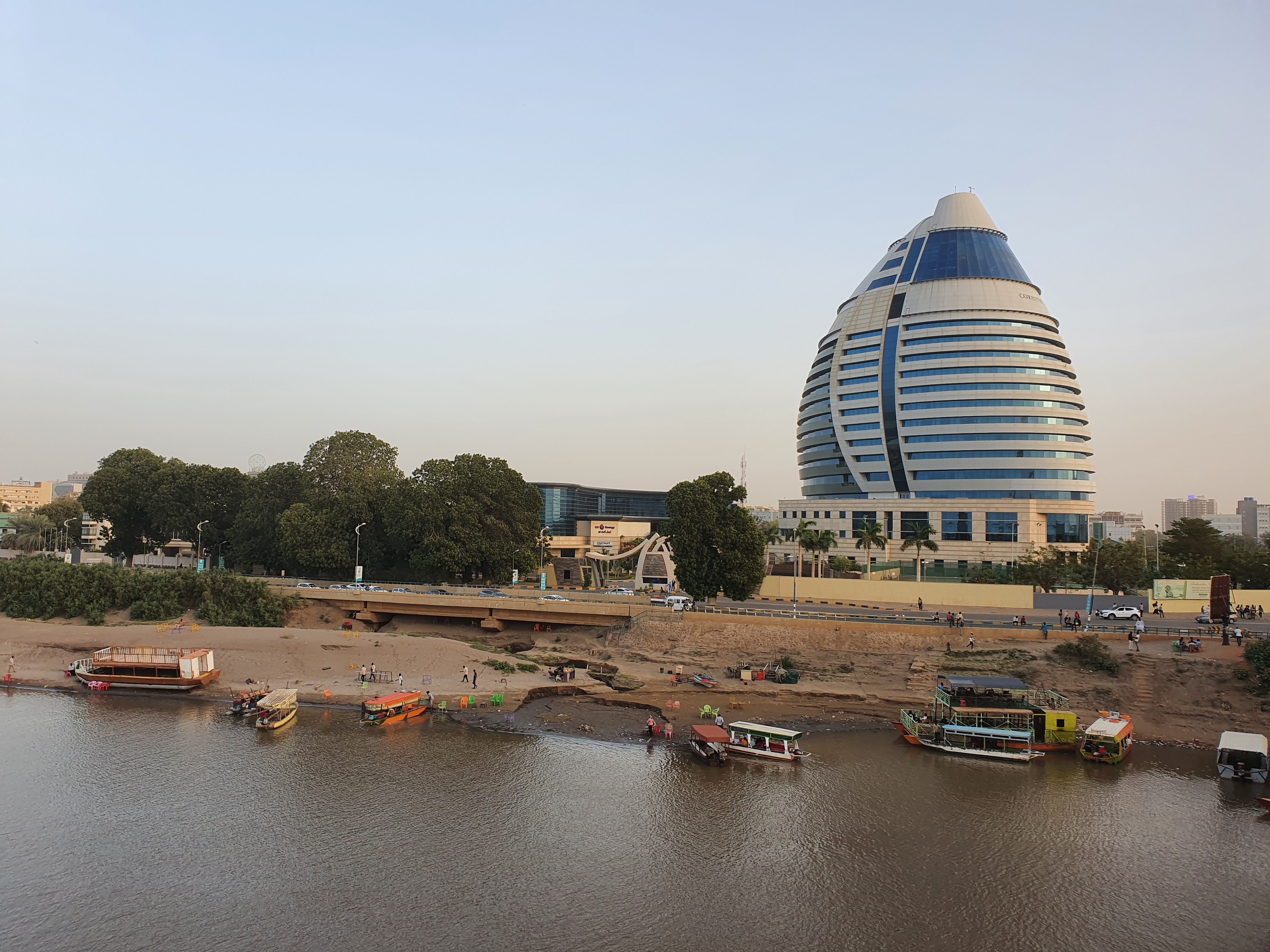
At 14:30 the driver dropped me off at my hotel. A full-day city tour came to an end after five hours, of which about 90 minutes was lunch and us waiting for the driver when he was having a tea with his friends. Moreover, the driver skipped two points of the program completely. Just like the driver before, he probably just wanted to get the job done as quickly as possible. As a result, this tour turned out to be the lousiest city tour I have ever had.
I later explored the city again on my own, walking through the streets of downtown, visiting a Coptic church, walking up and down the Nile Street, and crossing the Tuti Bridge. I found all of these places to be more interesting than the ones I was shown on this tour.
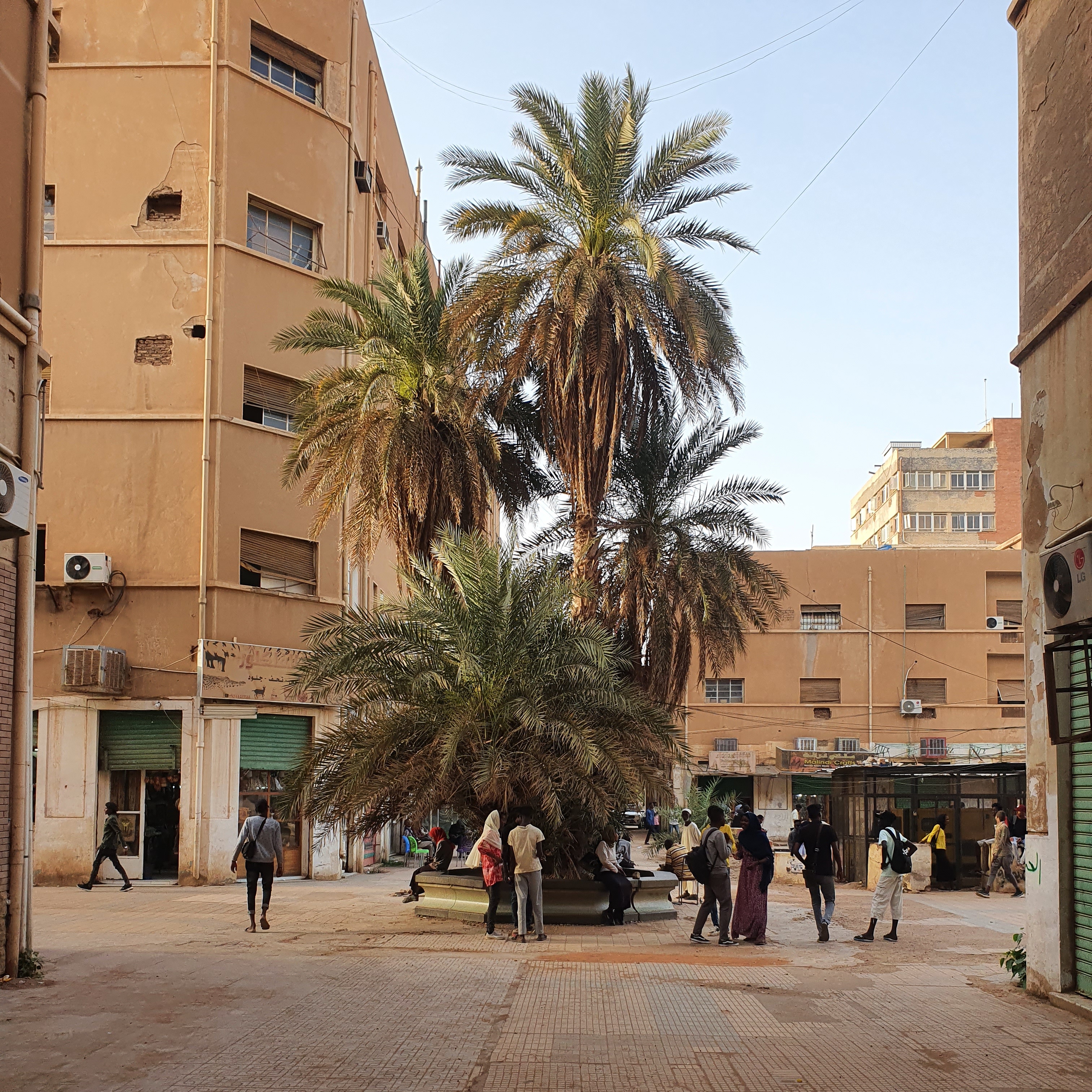
In the end, I think that a city tour in Khartoum is a waste of money anyway. In my case, it was part of the 5-day tour. For those who would like to travel to Sudan, I recommend exploring the capital on your own. Most of the interesting sights are within walking distance from downtown and if you want to visit the Omdurman Market you can take a cab.
What Sudan has to offer
Even though more and more travelers are discovering Sudan, it is still an off the beaten track destination. This brings some advantages as well as a few disadvantages.
The biggest advantage is obvious: in Sudan, you have the world-class sights to yourself. Even before the pandemic, it wasn’t like hordes of tourists were visiting the Pyramids of Meroë and you could enjoy such incredible places alone.
The price level in the country is generally very affordable. A meal in a decent restaurant in the capital costs about $6, but if you go to less fancy places, you often pay only half or a third of that. A coffee or a small bottle of Coke can be bought for 20-30 cents, a SIM card with 5GB of data cost me just $1.85. For my four days I only exchanged $20 in Sudanese Pounds and it was enough.
Another plus of Sudan are the people who are enormously friendly and hospitable. Unlike their neighbors to the north, where tourism was certainly not entirely innocent in the emergence of a larger number of rude rip-off artists, the people of Sudan welcome you with open arms and are happy about your visit. However, if you think of Sudan as an “undiscovered” Egypt, you will probably be disappointed. Although Egypt and Sudan have some similarities due to the geographic location and the pyramids, I found the countries to be quite different.
It goes without saying that Sudan is nowhere near as developed as Egypt. For this reason, you cannot expect such a good tourism infrastructure and the same comfort as in the neighboring country to the north. The country I found most similar to Sudan was Mauritania on the other side of the continent. If you have ever traveled there, you can see some parallels to a Sudan trip such as long drives through the desert, few tourists but very friendly locals.
In short, my Sudan trip consisted of many hours in the car, top sights, rather bad nights and a ridiculous city tour in Khartoum. This may sound more negative than it is, because in the end I found Sudan a beautiful country. Even though the trip was okay all in all, it probably would have been better with another tour operator. How to make a desert tour sensational was shown to me by the gentlemen of Time for Mauritania one year before this Sudan trip. This tour also included a lot of long drives through the desert, but the guides really cared about their guests and did everything they could to provide the tourists with an extraordinary experience.
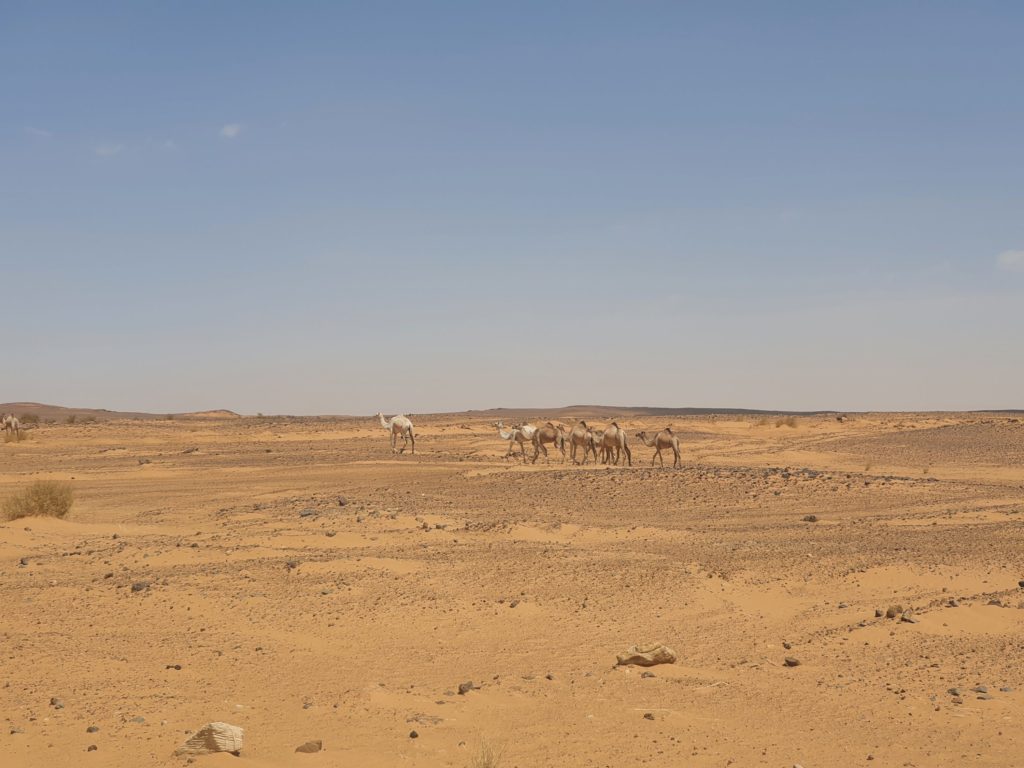
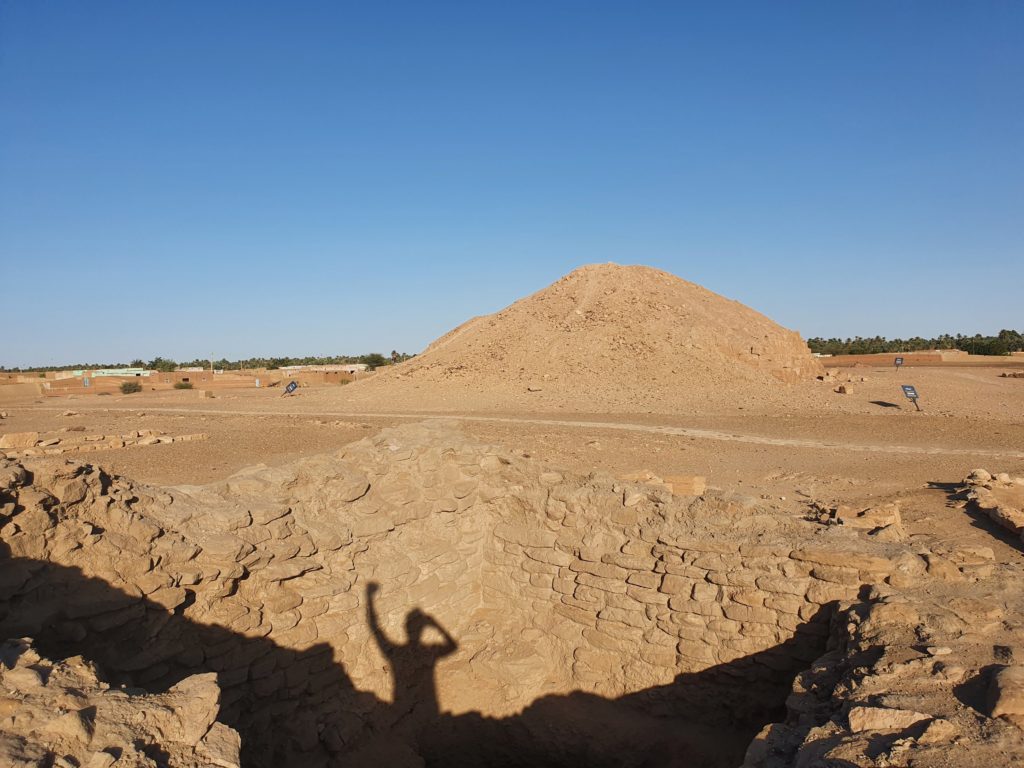
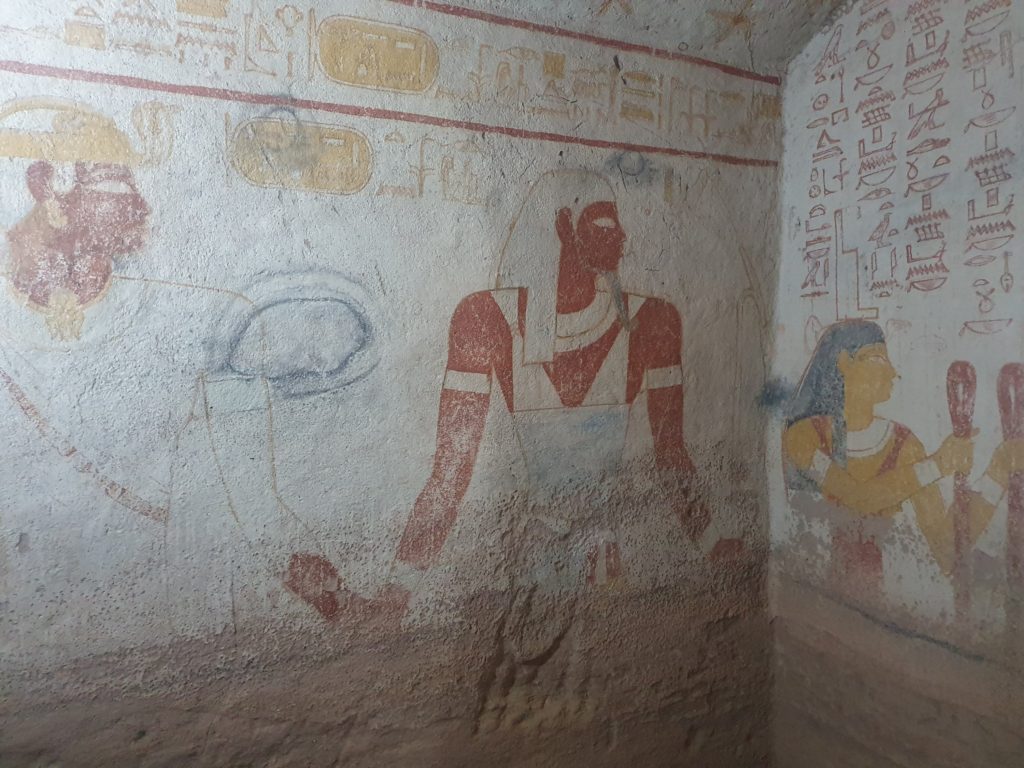
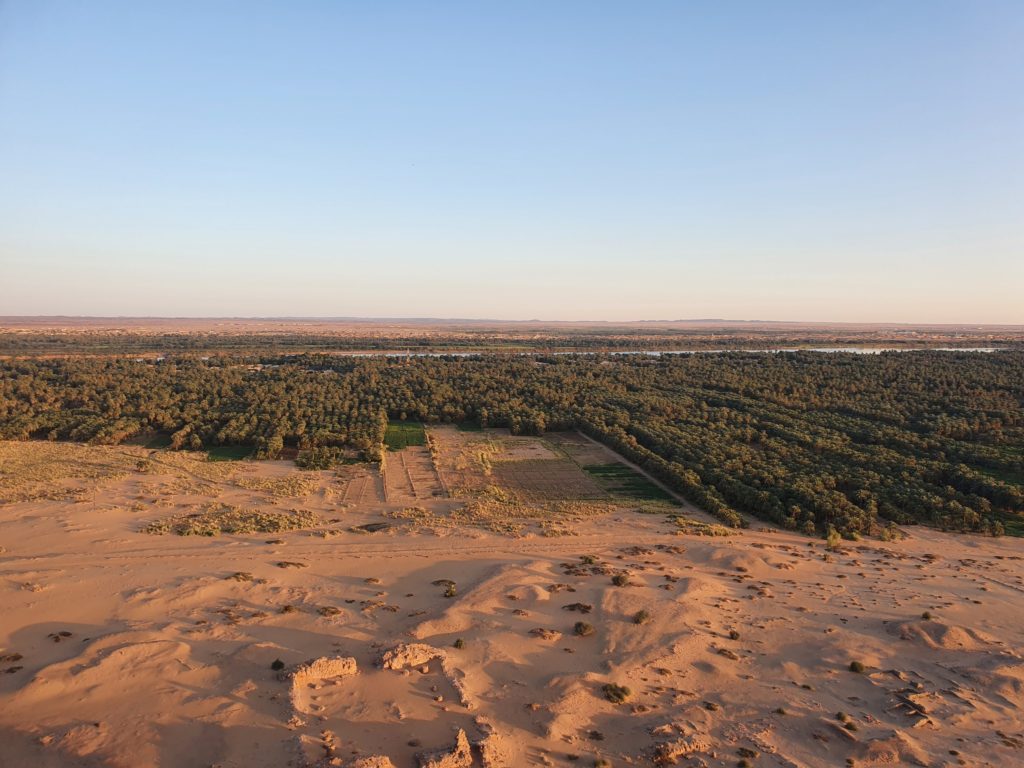
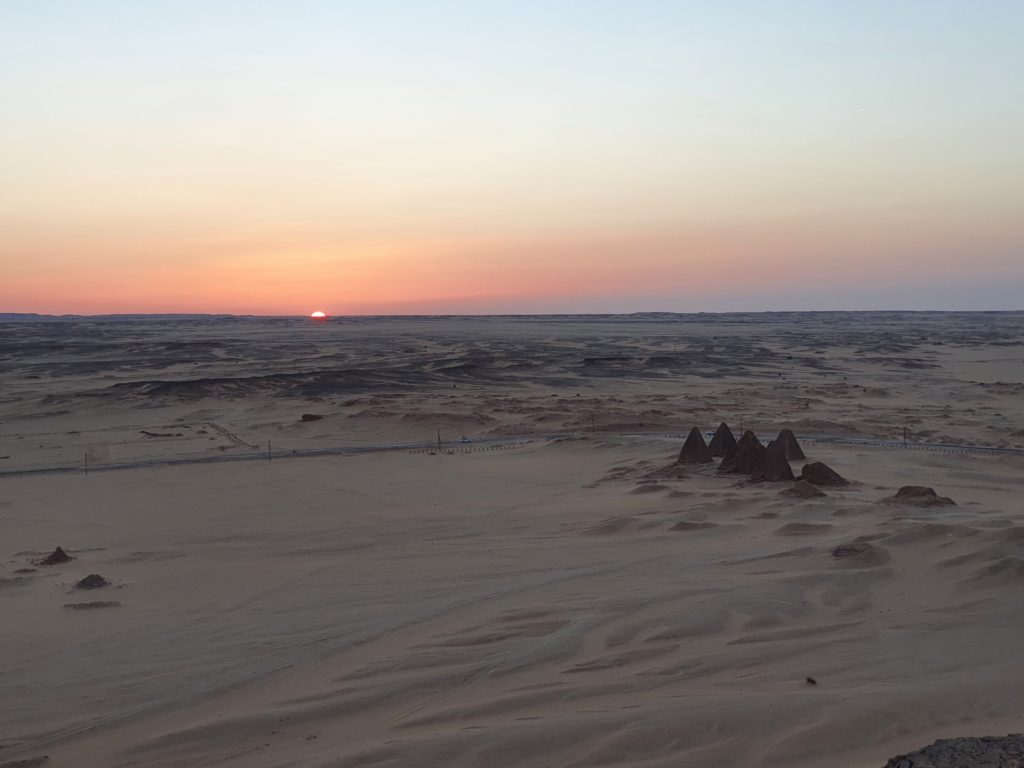
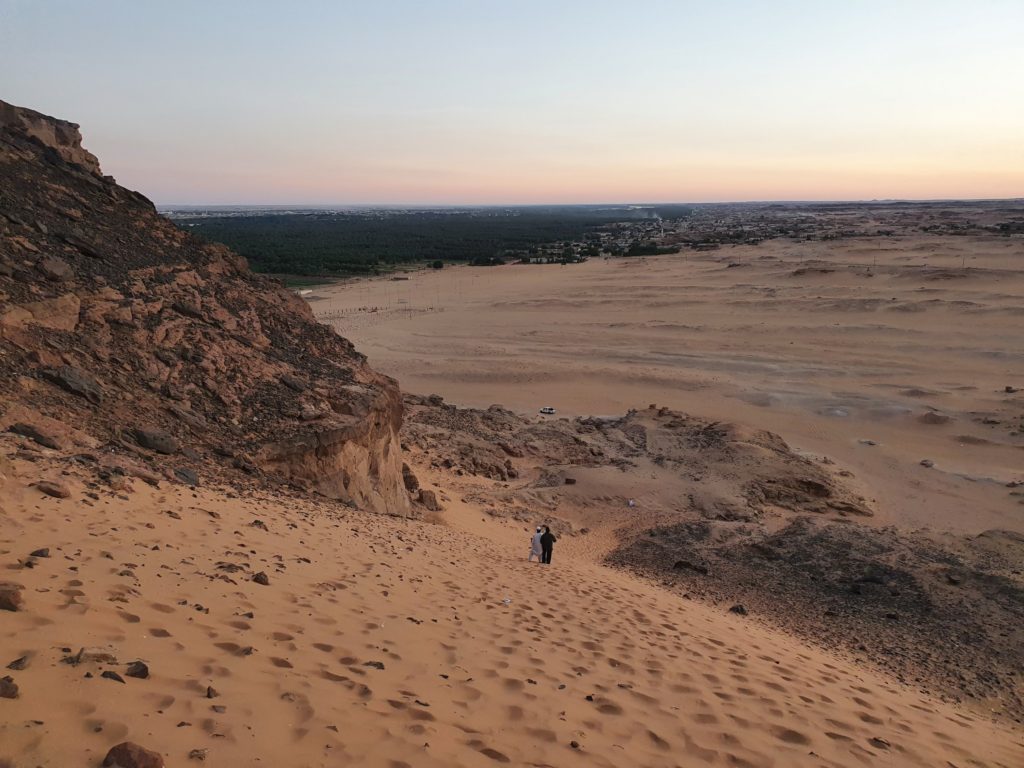
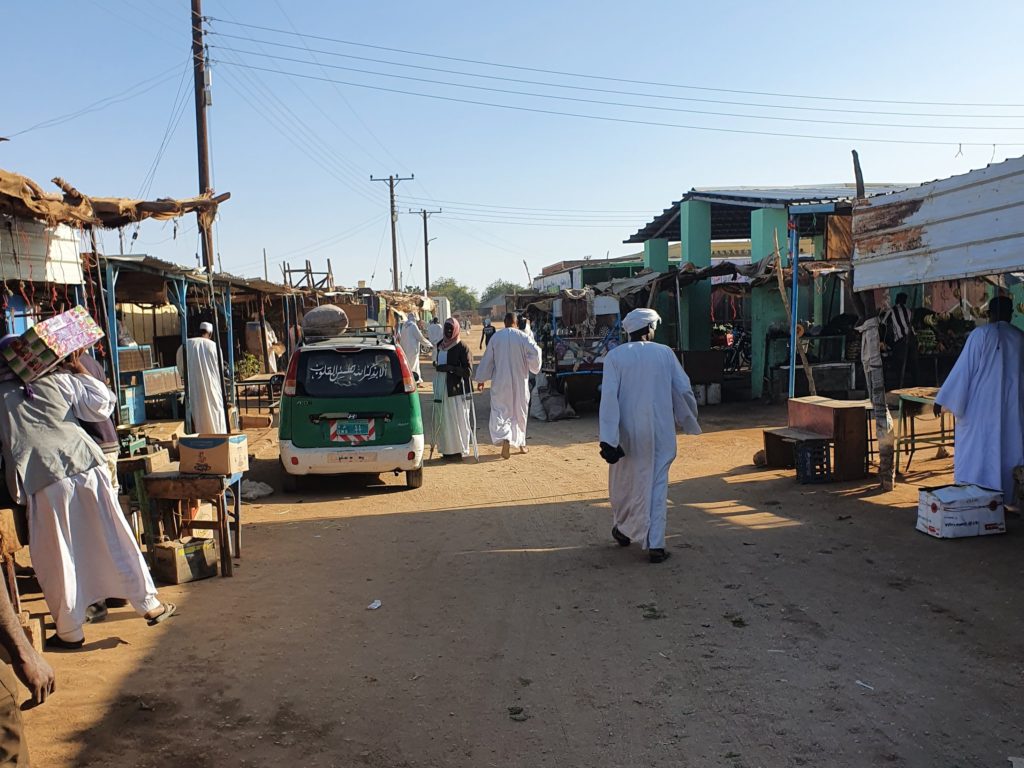
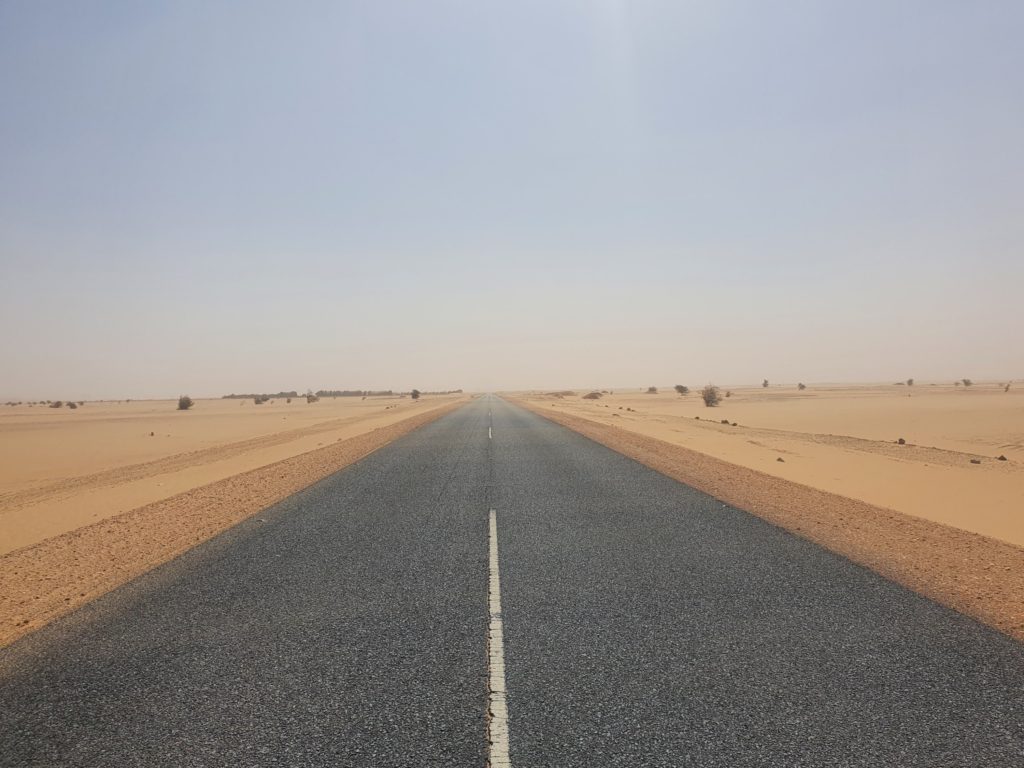
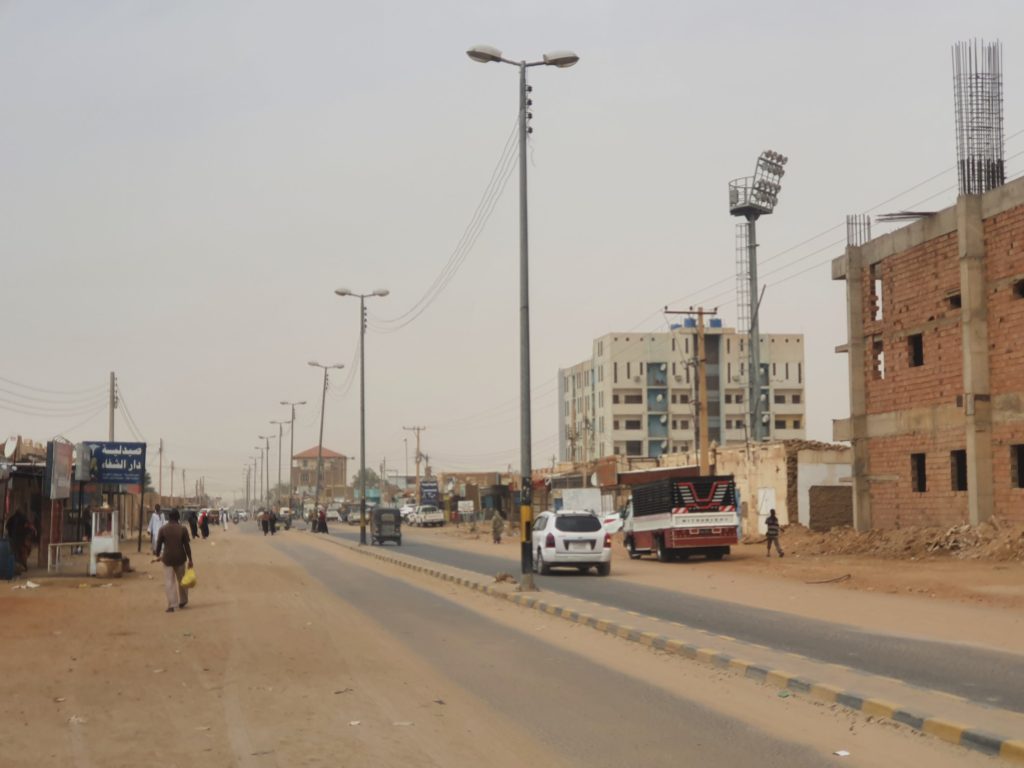
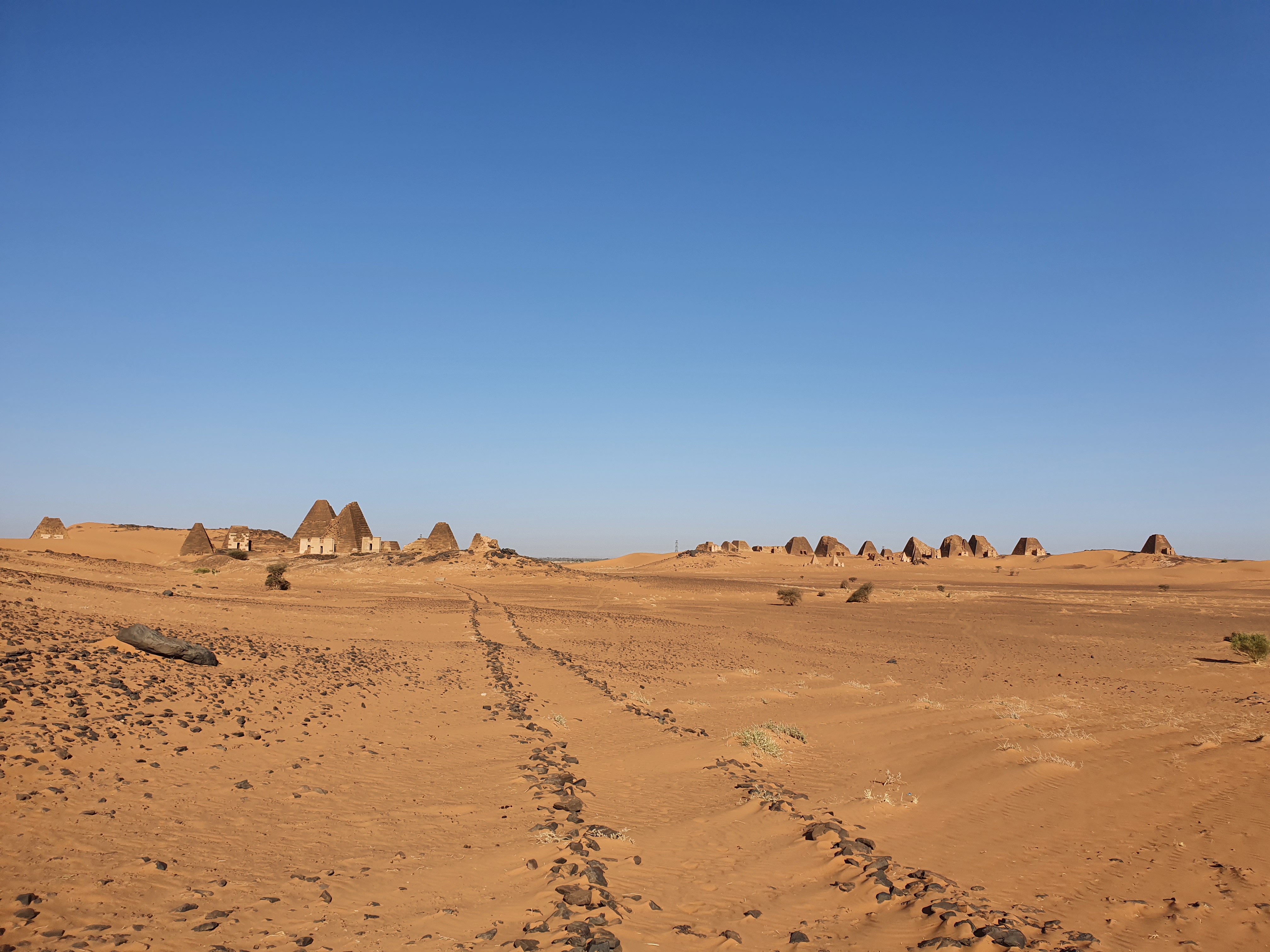
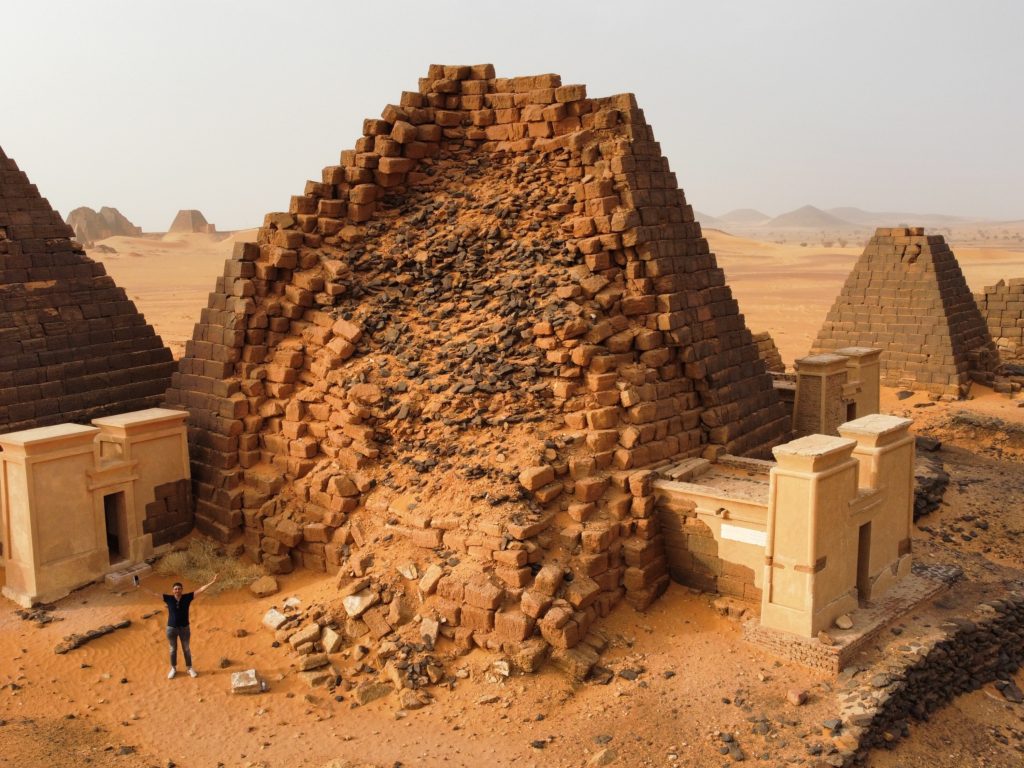
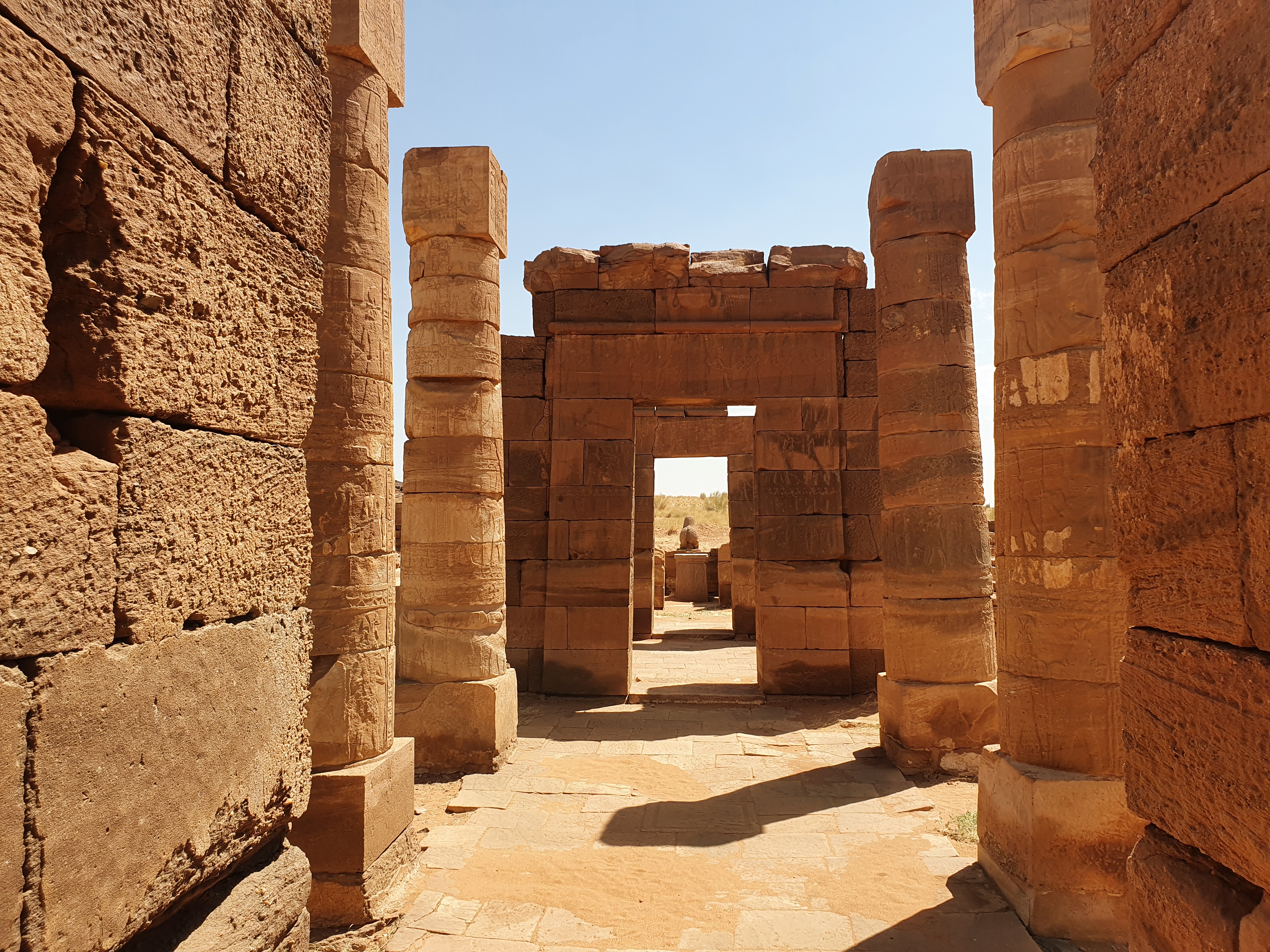
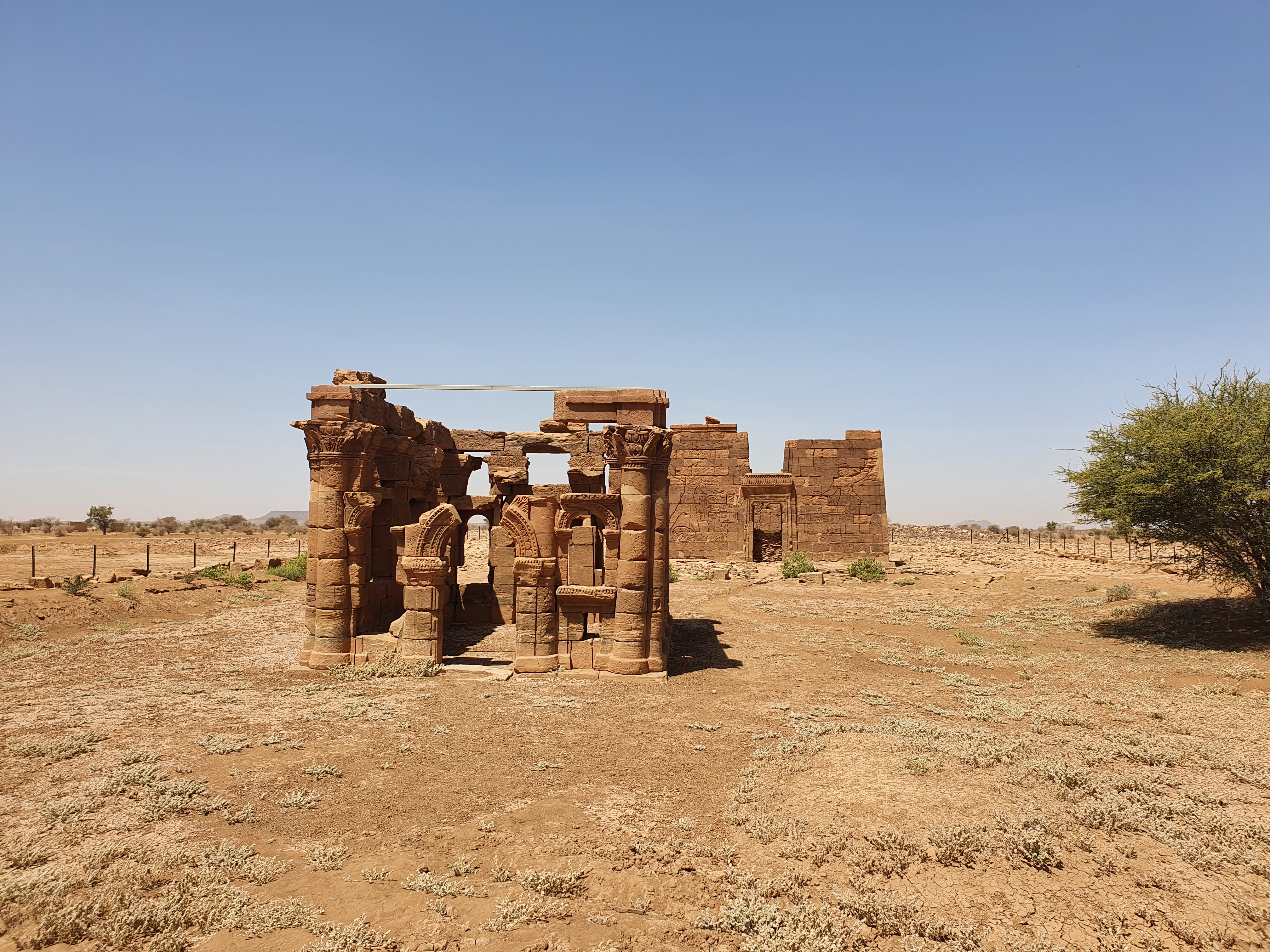
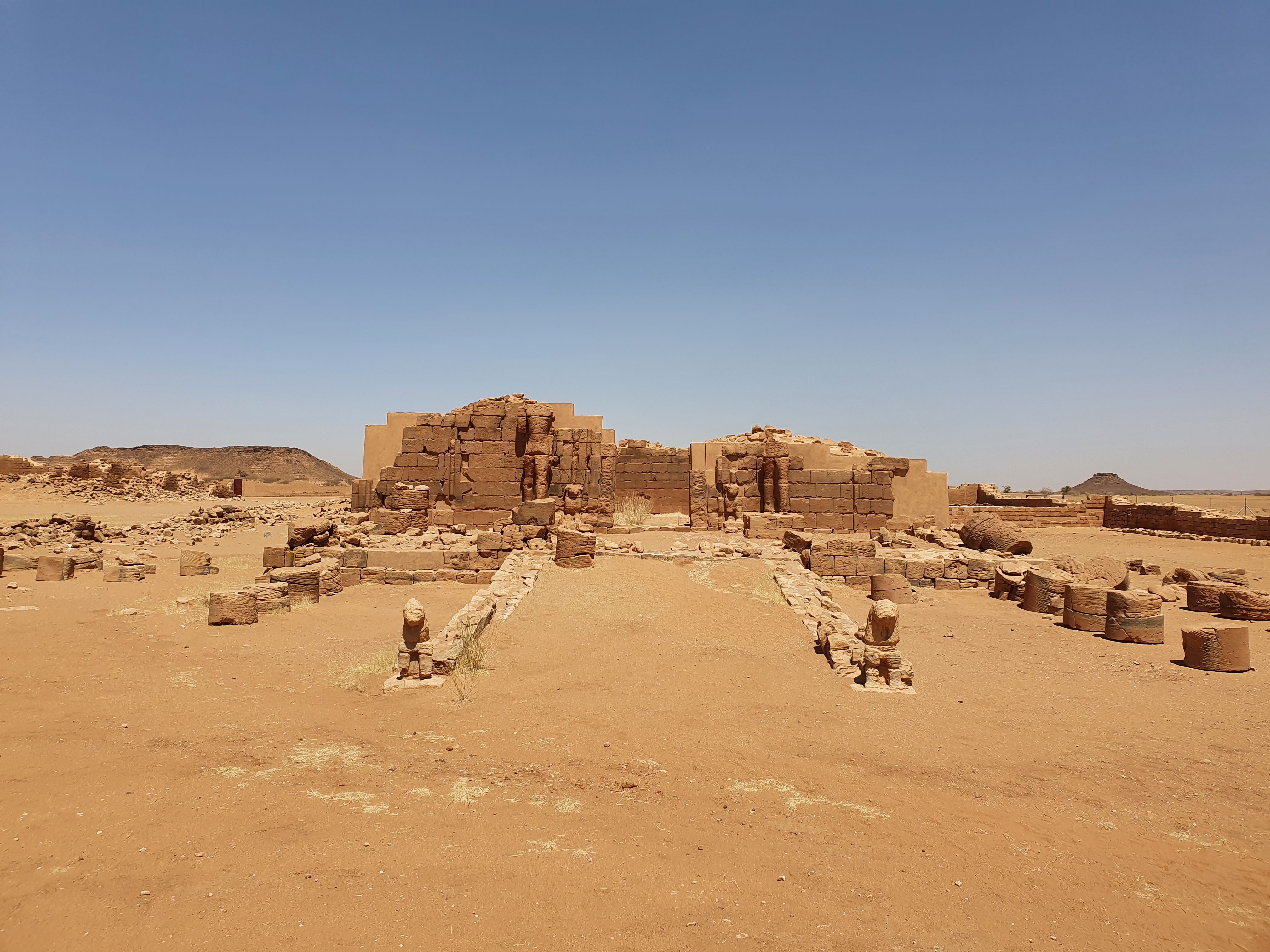
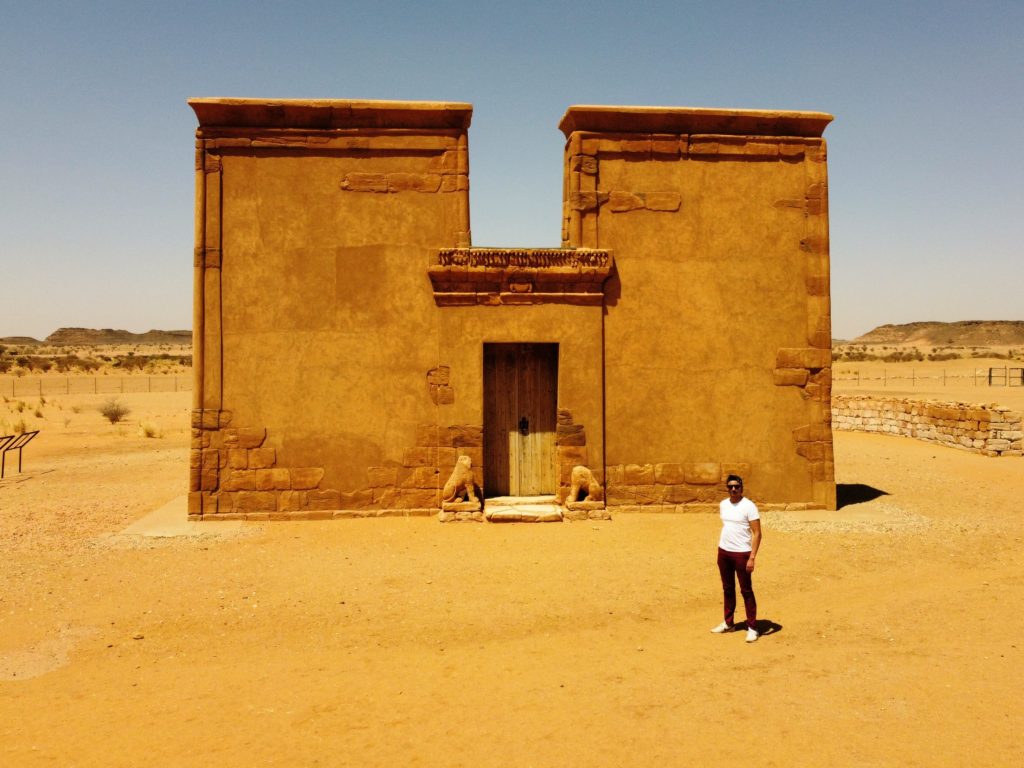
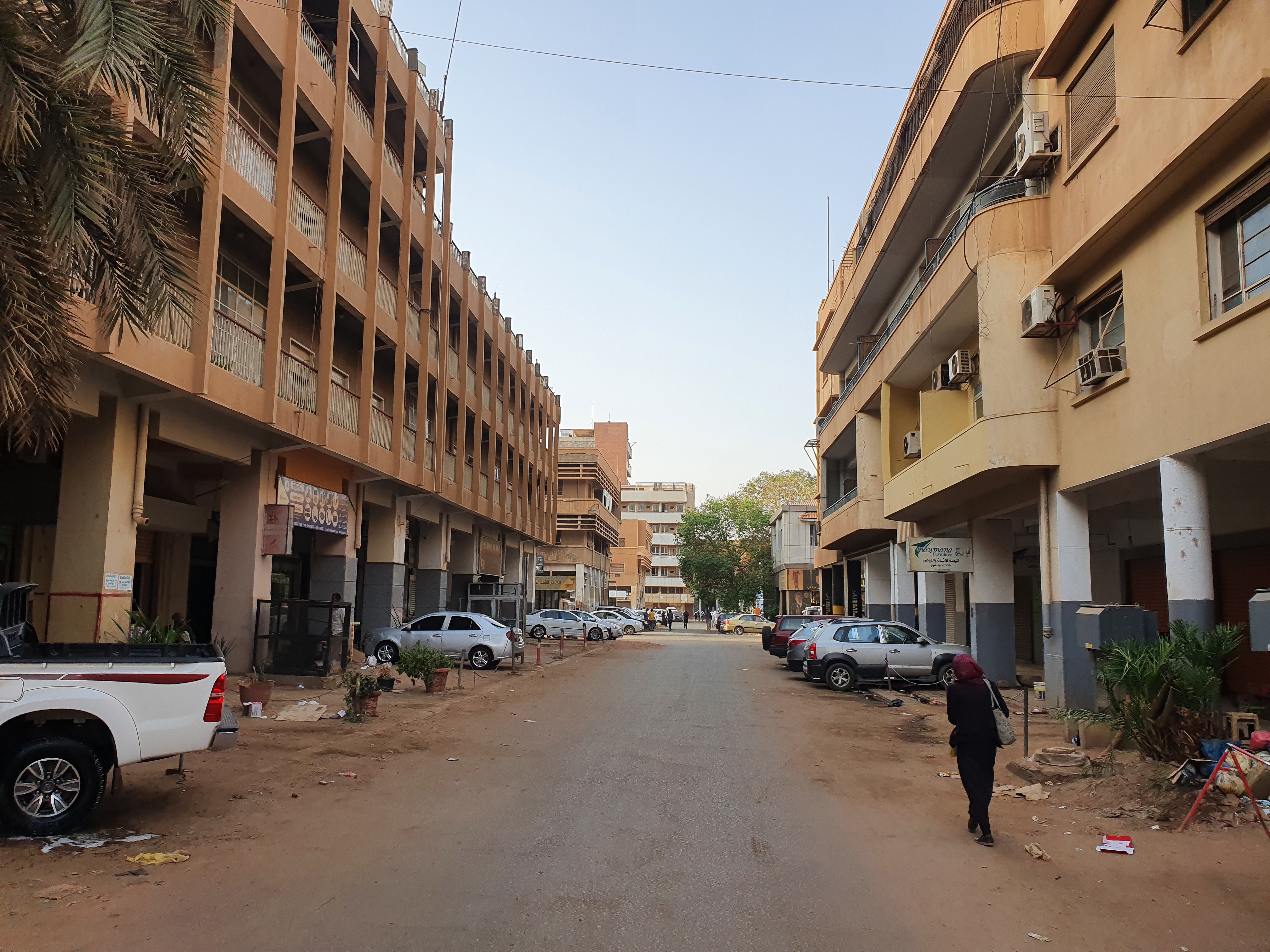
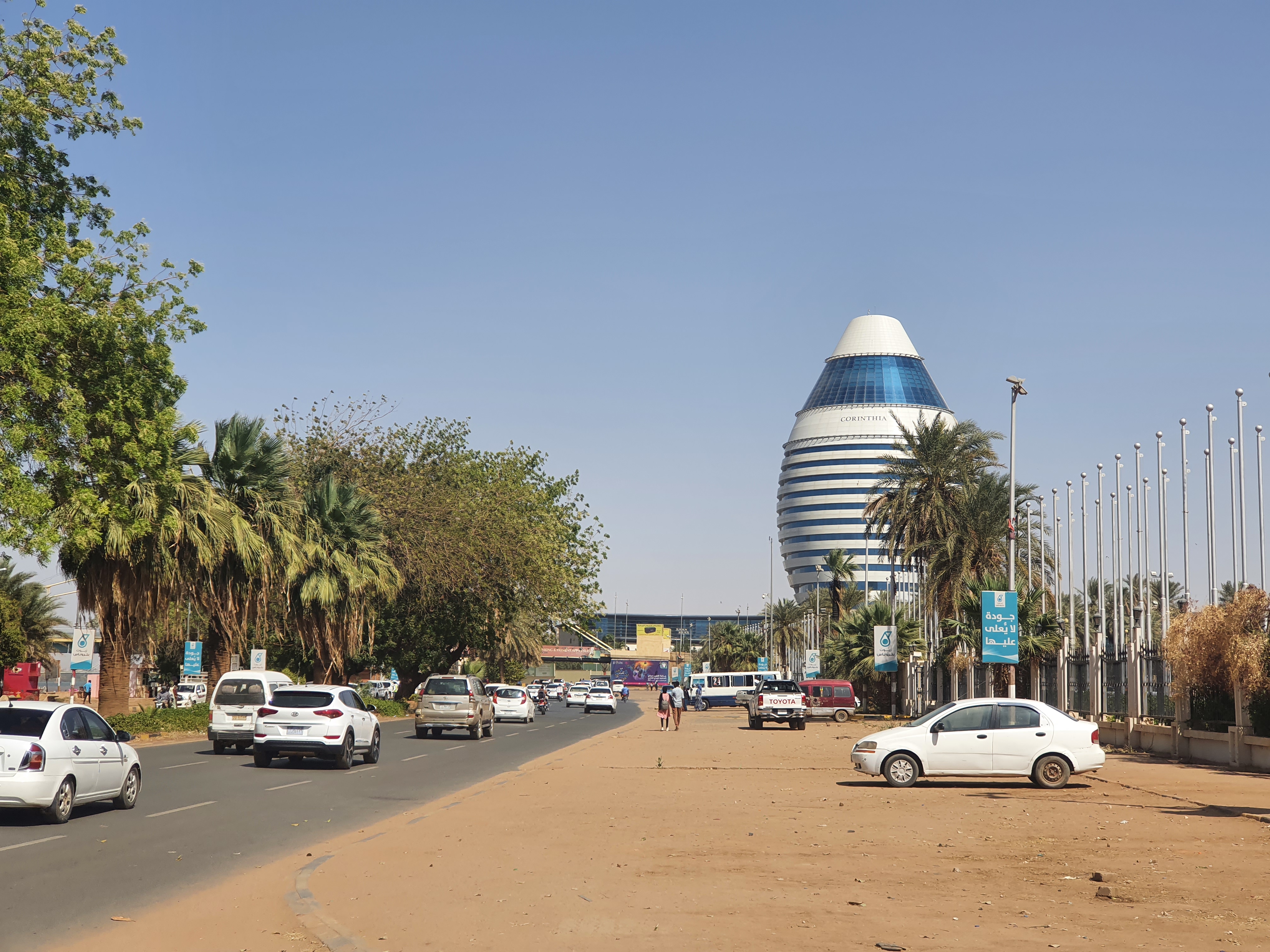
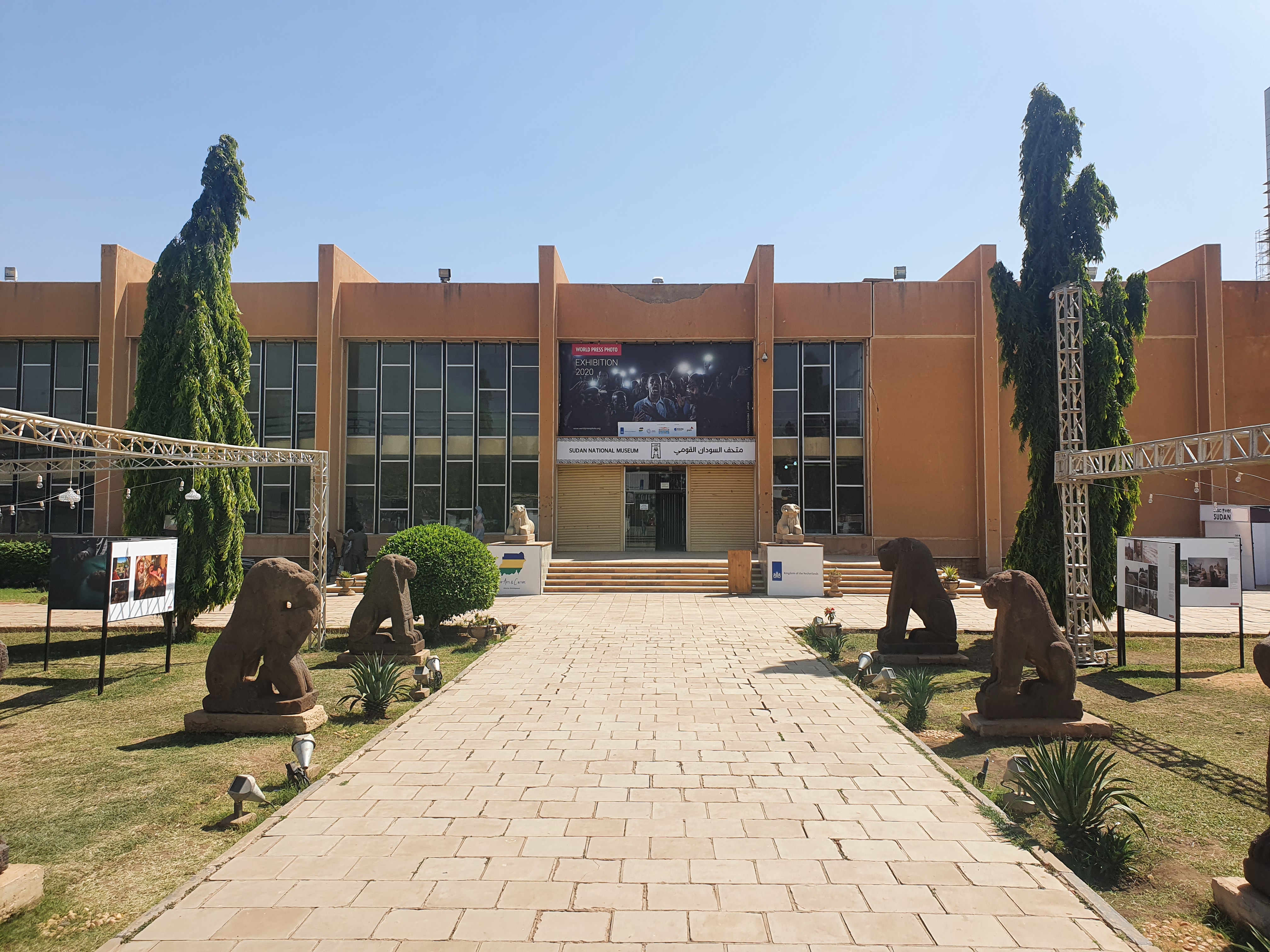
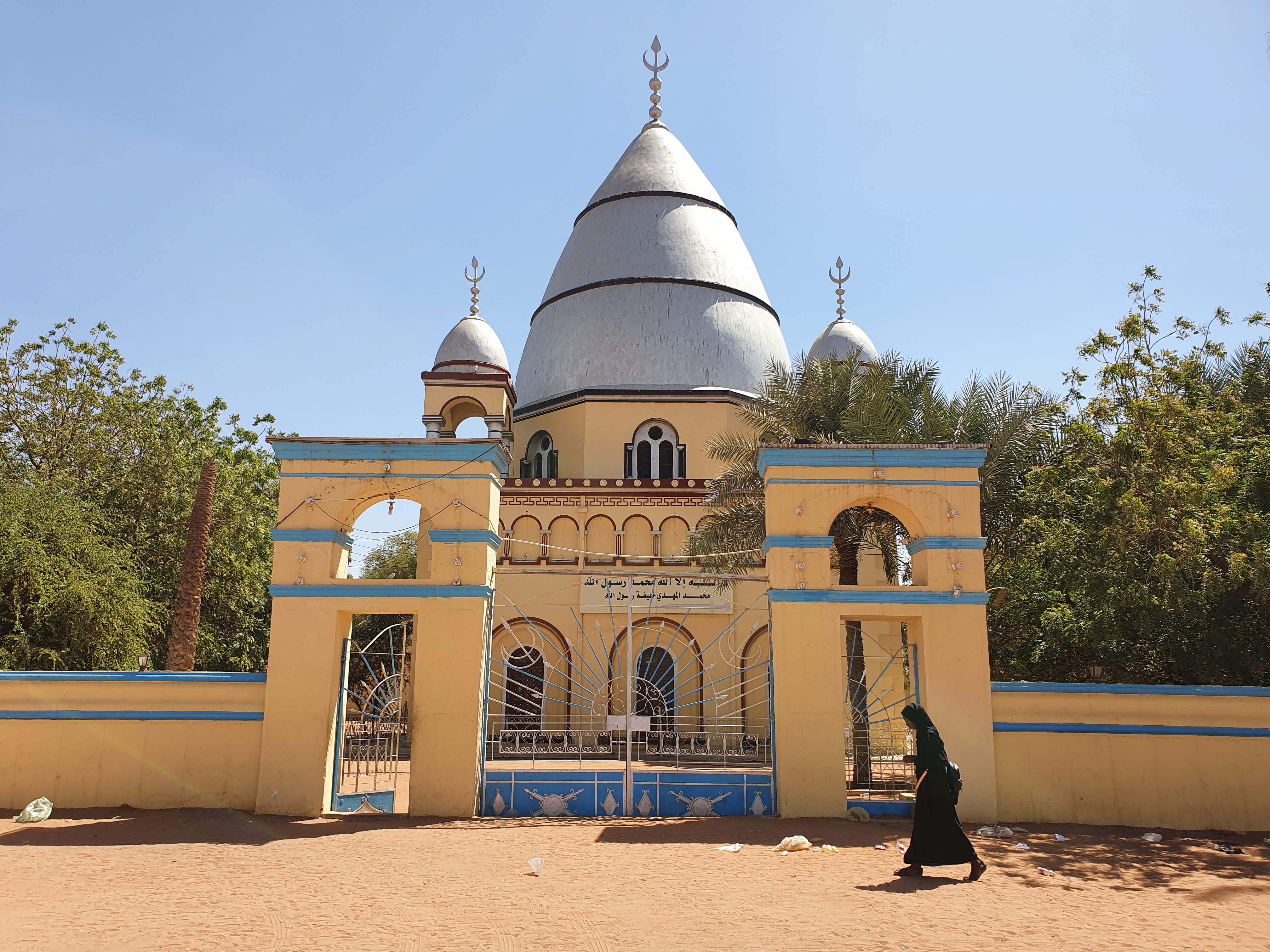
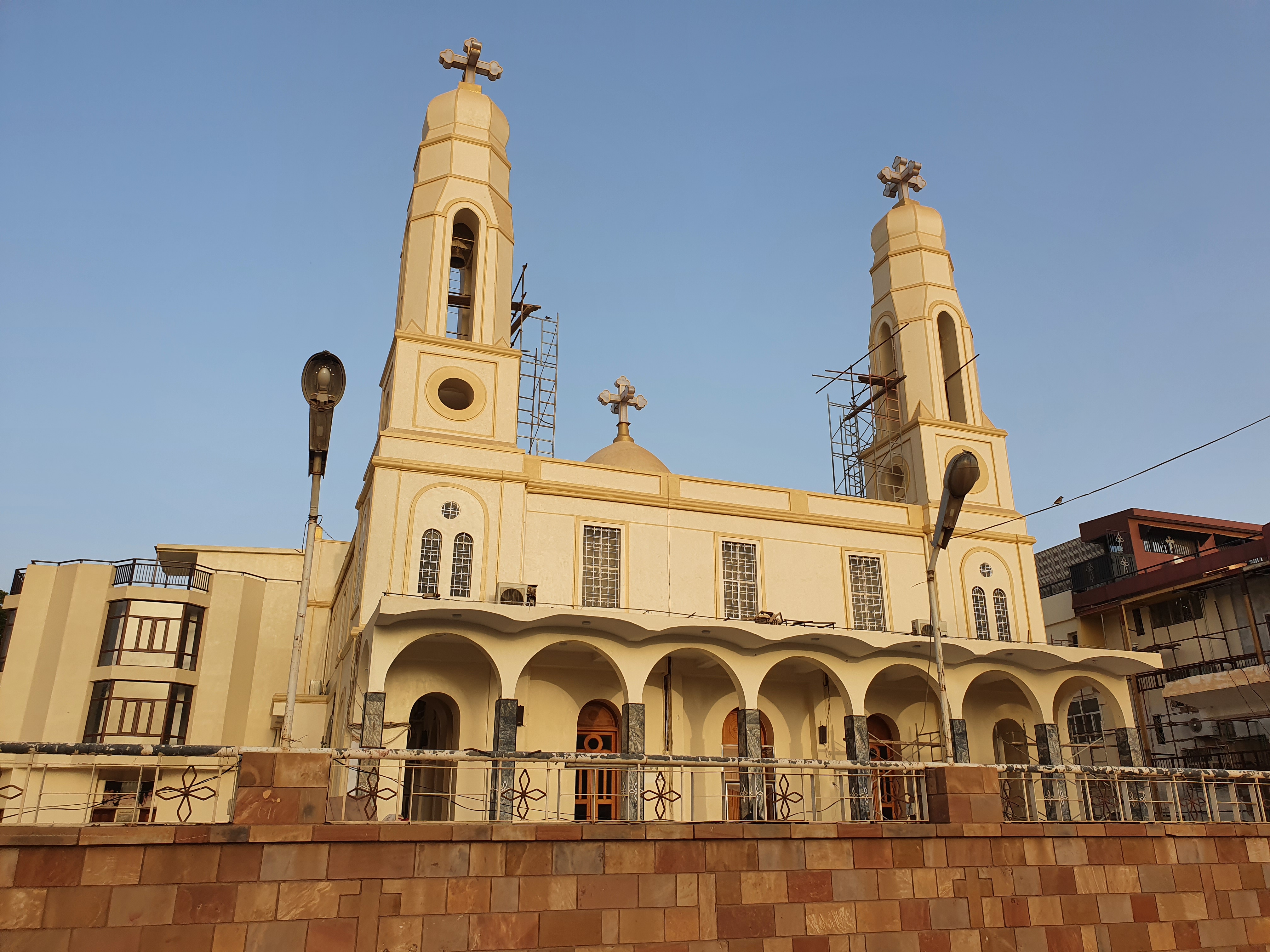
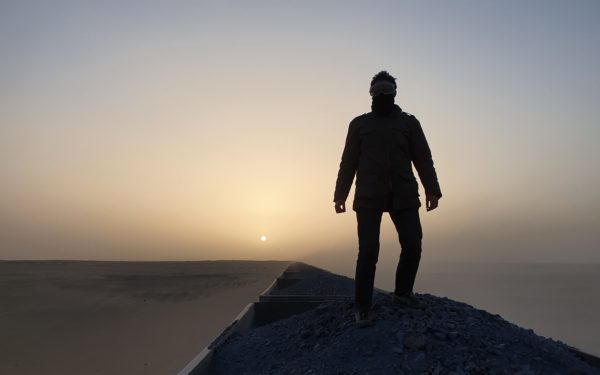
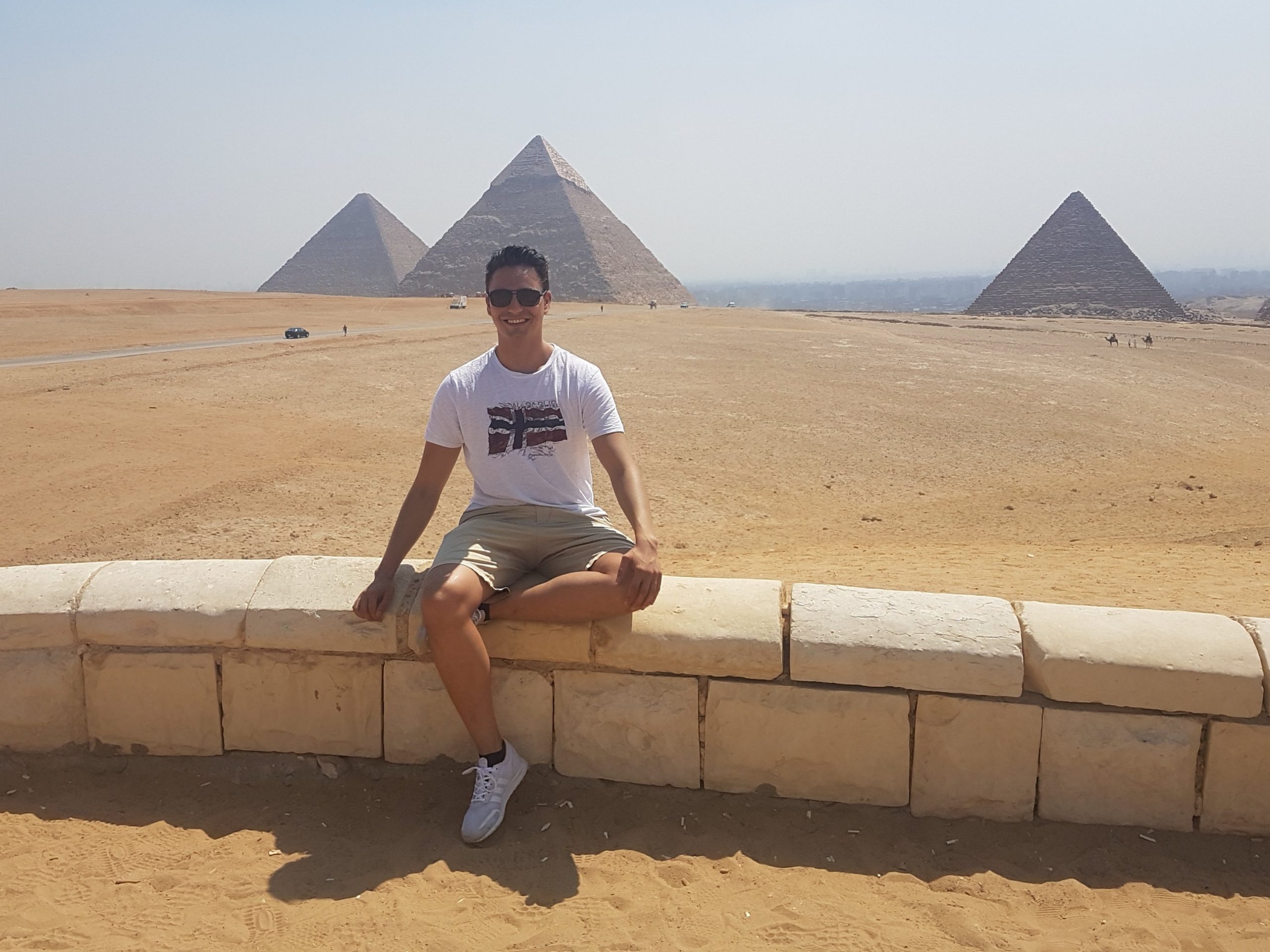
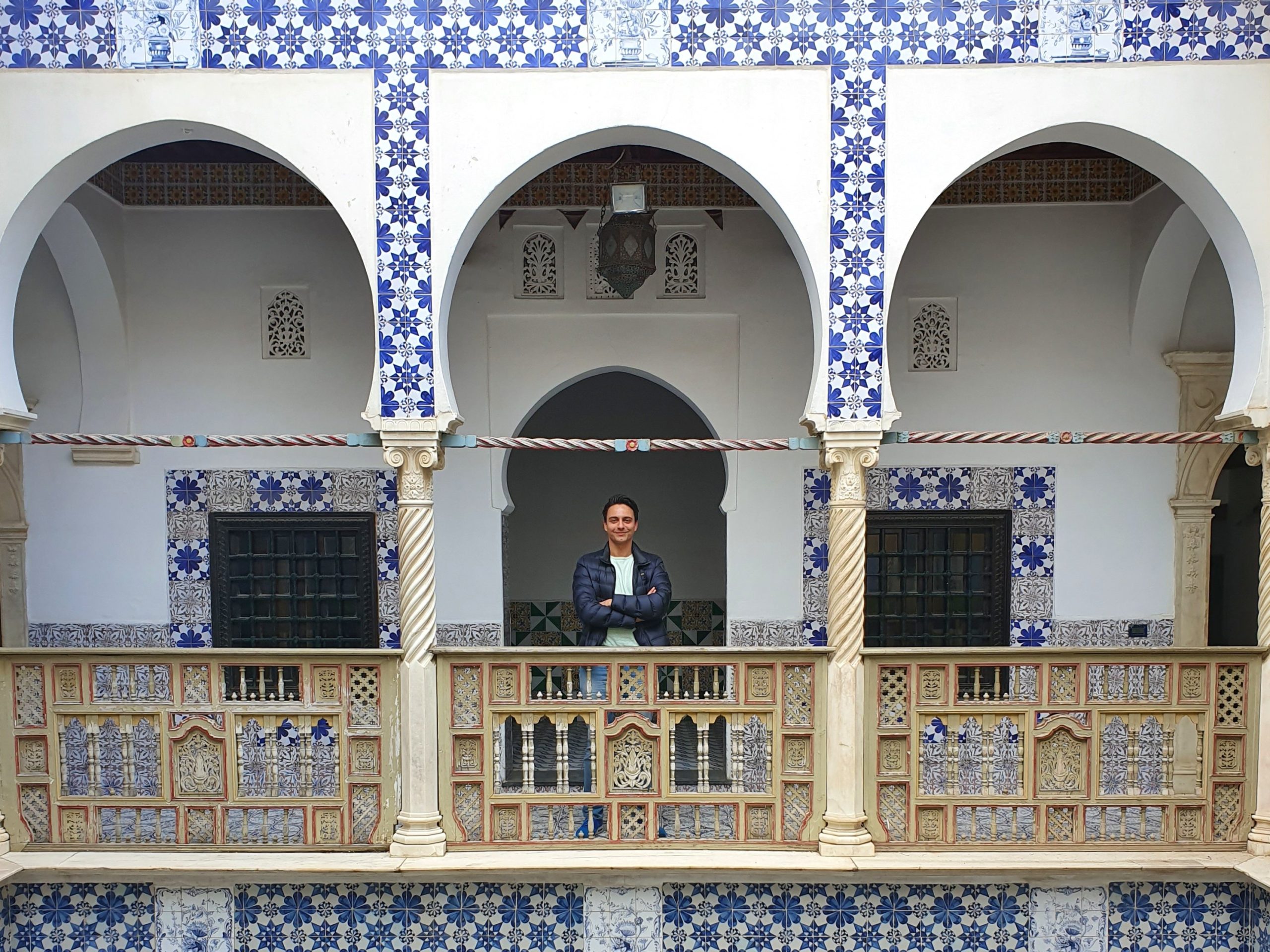
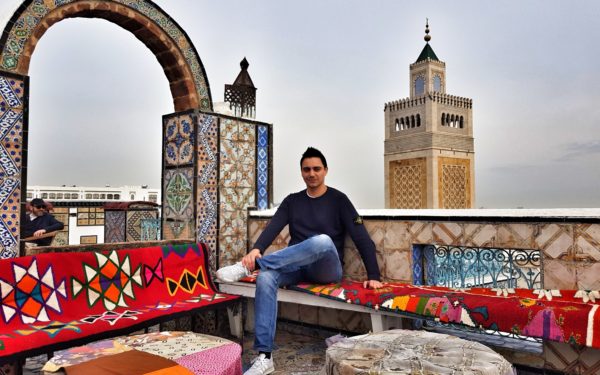
Thanks so much for such a nice summary of your trip. Would love to visit the pyramids in Sudan one day. Hopefully I’ll have a better tour guide than you did 🙂
😂 😂 😂 Absolutely yiu well get tour guide better
Thank you for your feedback about your visit to Khartoum, this article is trending in Sudanese Twitter at the moment, and people are trying to escalate it the government agency responsible of tourism.
Hi Ahmed, thanks for your comment. Actually, there is no need to escalate this, I was not ripped off or had a terrible experience. I just mentioned that the tour could have been better. I still had a good time in Sudan despite some minor incidents that were a bit annoying.
Thanks actually you give comprehensive details of your journey
Hope the tourist authorities will look on these negative
I am sudanes but you know better